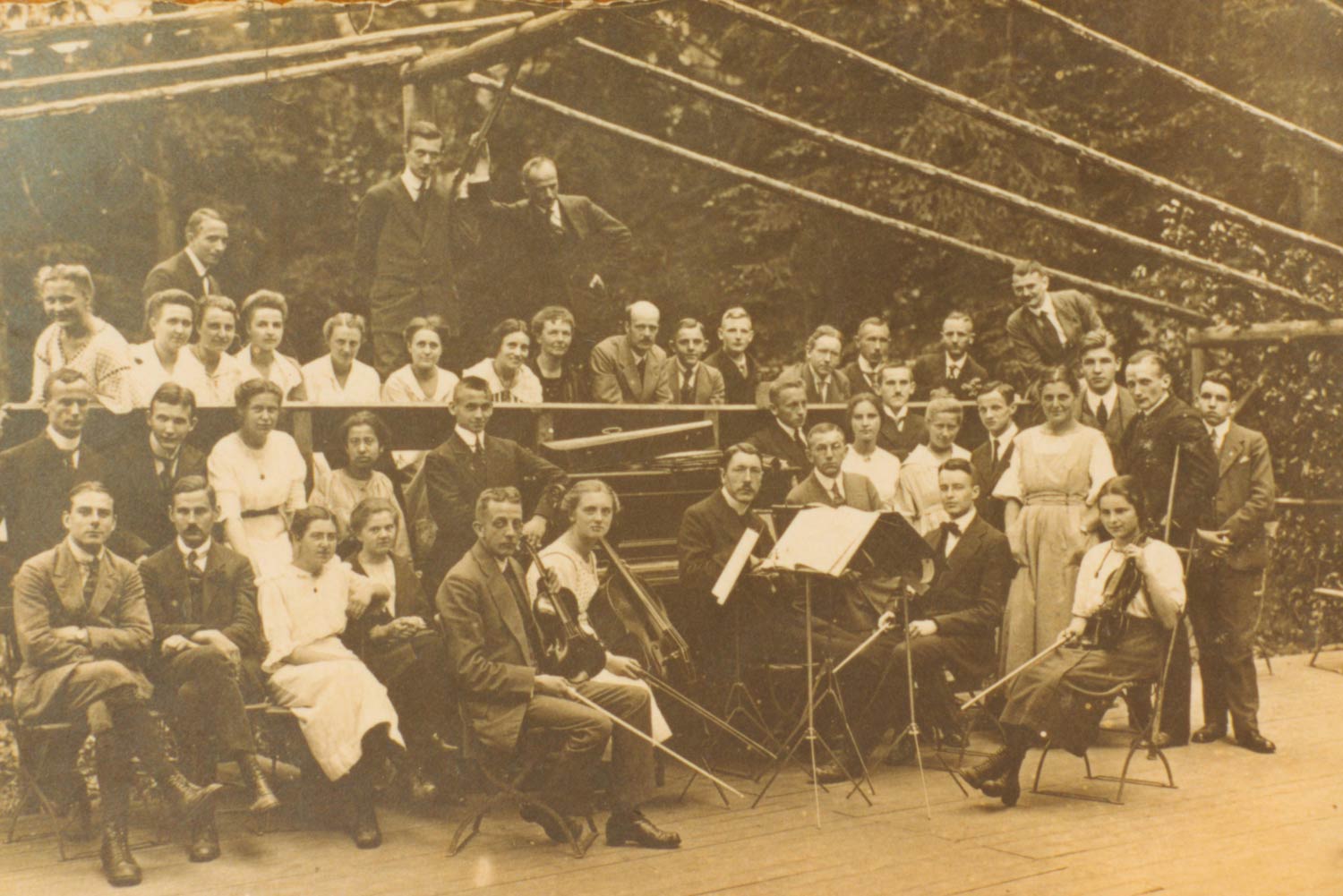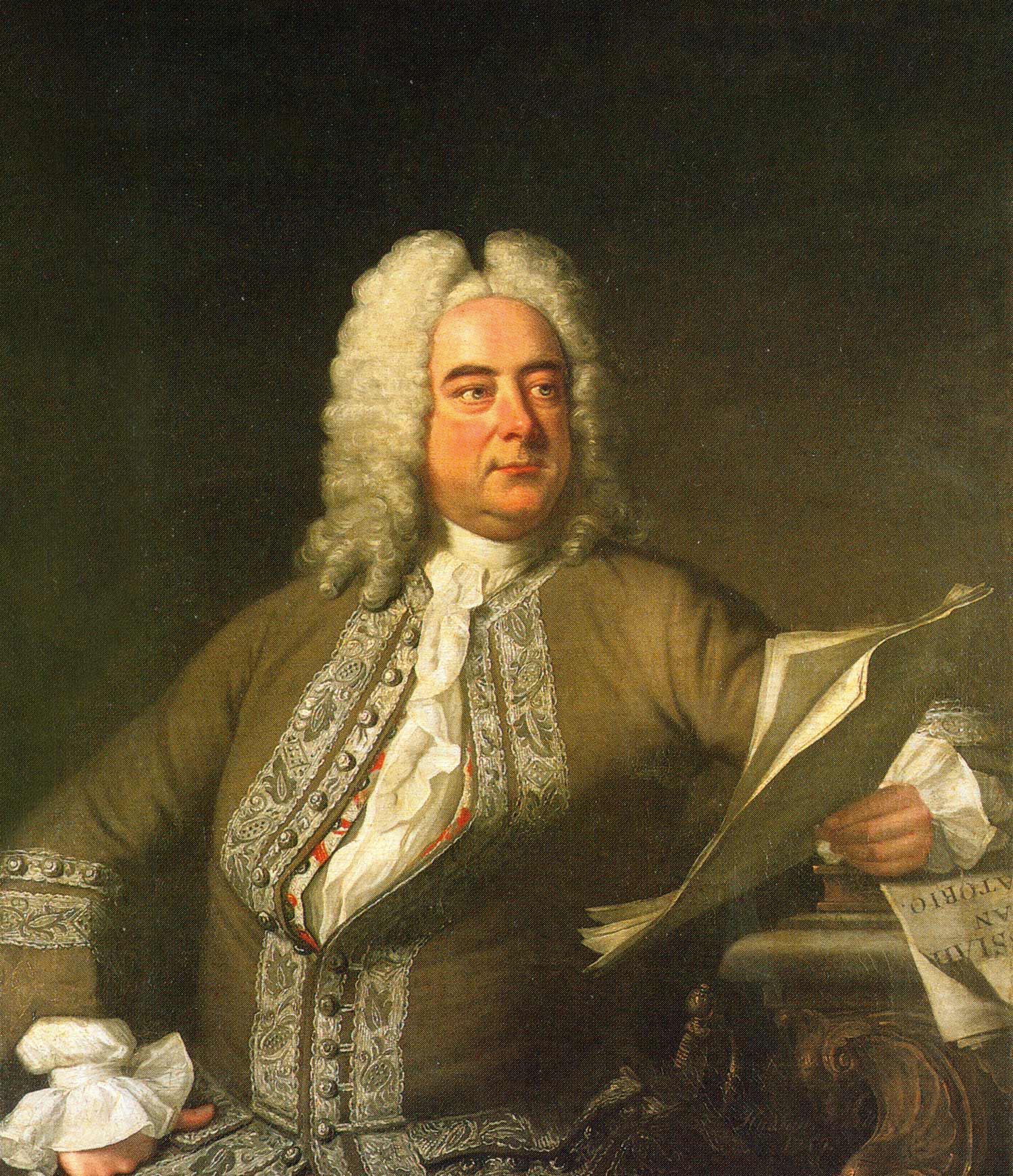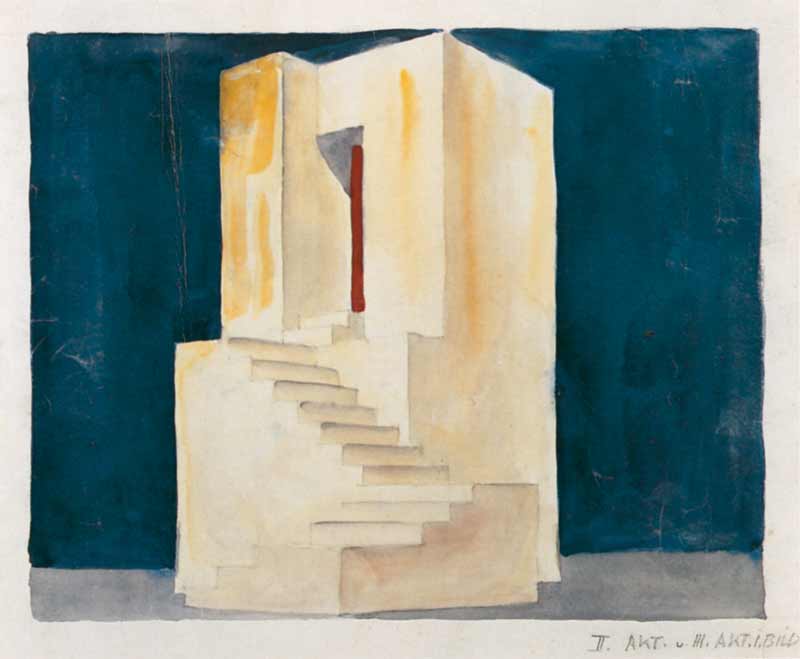In the year 2020 the Göttingen International Handel Festival (IHFG) celebrated its 100th anniversary.
The Städtisches Museum Göttingen marked the anniversary with a special exhibition on the early development of the Festival and its eventful history.
This multimedia online exhibition looks at the city in 1920 and the zeitgeist which led to the emergence of the ‘Göttingen Handel Renaissance’ and, in turn, to the Festival. Dive into our lively online exhibition!
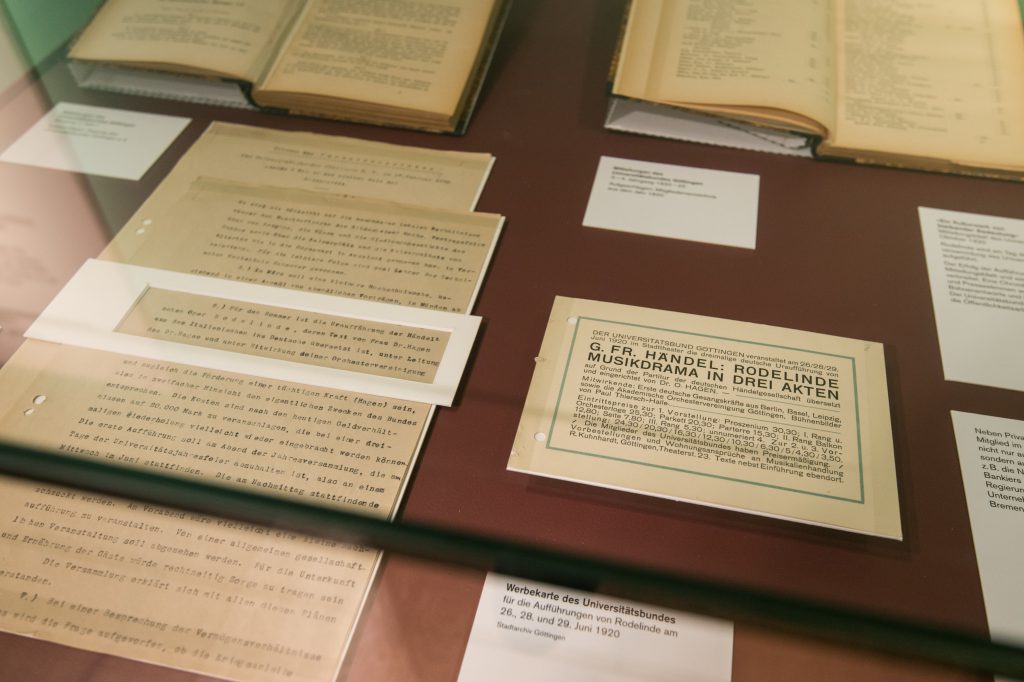
With the support of:

Trailer
A century of the Göttingen International Handel Festival – from a local project to an international event
Watch the film, produced especially for this exhibition, at selected times here.
Prologue
Rediscovered in 1920! A century of Handel’s operas in Göttingen
The performance of the operaRodelinde in 1920 marked the ‘Göttingen Handel Renaissance’ and the beginning of the Göttingen International Handel Festival, which is celebrating its 100th anniversary in 2020.
On June 26th 1920, Handel’s opera Rodelinda is performed in Göttingen. Professionals and amateurs are singing, playing and dancing in the municipal theatre. They are accompanied by the Akademische Orchestervereinigung Göttingen, an amateur orchestra.
Handel’s operas are not often put on stage already during his lifetime. Handel’s sacred music, the oratorios and orchestral works such as the Music for the Royal Fireworks or the Water Music are mainly played. After Handel’s death, his 42 operas have sunk into oblivion for the most part. The last premiere of Rodelinda took place in the year 1734.
Handel is regarded as one of the most important musicians in history. His artistic pursuit includes all musical genres of his day. His main works covers 42 operas, 25 oratorios and famous orchestral works.
Five facts about Handel
George Frideric Handel
- is born in Halle (on the Saale river) on February 23th 1685
- as a child, secretly practices playing the clavichord
- starts writing his first opera in Hamburg in 1703 at the age of 18. In 1706, Handel begins a four-year study tour of Italy
- moves to London in 1712, where he remains for the rest of his life
- dies on April 14th 1759 in London and is buried in Westminster Abbey four days later
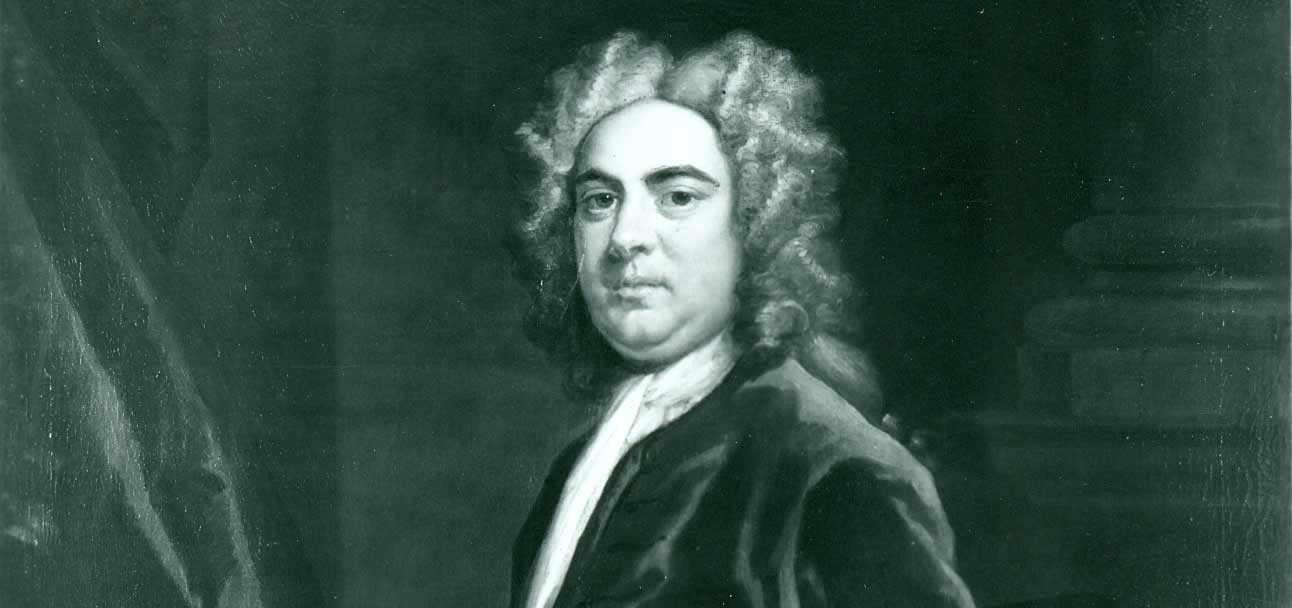
The Göttingen opera performance is the ceremonial act of the annual general meeting of the Universitätsbund in the year 1920. The singing is made in German but not in Italian, “Rodelinda” becomes “Rodelinde”. What is more, the arias are intensely abridged. This performance is a great success. There is positive resonance all over Germany.
The so-called Handel renaissance (renaissance = rebirth) starts with the Rodelinde performance. Until the year 1927, the Göttingen version of Rodelinde is shown 136 times on 21 stages all over Germany. The Handel operas are back – and are performed.
How did it come about, that Handel was rediscovered in Göttingen a century ago?
Whose idea was it, and who was involved in making it happen?
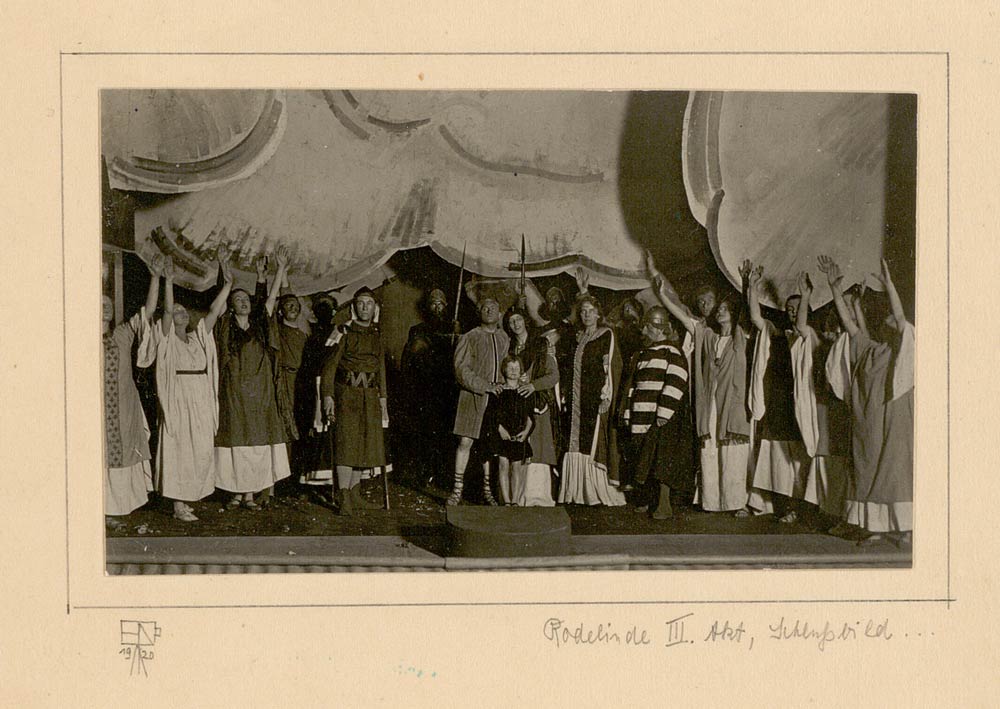
Chapter 1
Göttingen in the 1920s
1.1 Small town – big network: the city of Göttingen
In the year 1920 Göttingen is a city with scarcely 40,000 inhabitants. They advertise for themselves as ‘Garden and University City’. The description as ‘Pensioners’ and University City’ would be more appropriate. More pensioned civil servants than average are living here. In the 20s, Göttingen is playfully referred to as “Pensionopolis” as well. Industry is barely-there. Approximately 4,200 students are registered in the university.
Historische Aufnahmen von Göttingen aus den 1920ern
The city of Göttingen does not only provide the municipal theatre for the performance of Rodelinde but also bears the costs of scenery constructions and costumes. The planned performance has a powerful advocate in the mayor Georg Calsow who is the second chairman of the Universitätsbund at the same time.
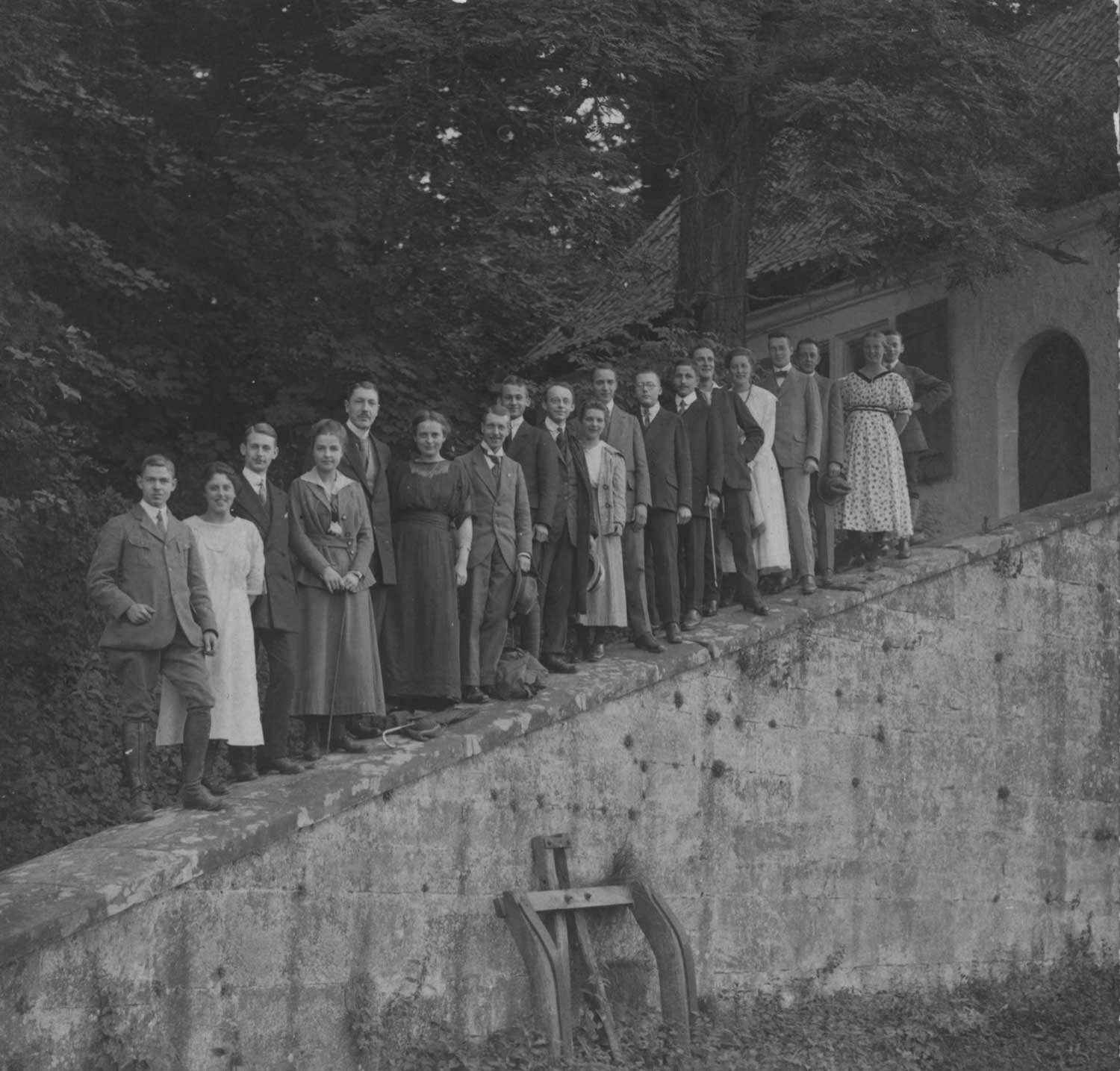
The membership list of the Universitätsbund indeed shows an amazingly high number of noncitizens of Göttingen. But the Göttingen names read like a “who is who” of the city. The rich and powerful civil and academic families meet here.
The intersection with the musicians of the Akademische Orchestervereinigung (AOV) is high. Since the orchestra has been opened for female citizens, a growing number of female students, wives and daughters of professors also play in the AOV.
Hence, the staging of Rodelinde has the maximum personnel and financial support by Universitätsbund, the city of Göttingen and AOV.
1.2 Göttingen in the year 1920 – Hunger for culture
War is over – but the people are still suffering from its aftermath. Starvation, diseases and inflation weigh upon life. In spite of it all, there is a spirit of optimism.
The emperor has abdicated two years ago (1918), one year ago (1919) the women won the right to vote. Society is changing. New fashion, new art, new music fill with enthusiasm.
The forced break caused by the war is brought to an end and cultural activities unfold. In the summer term of the year 1920, 325 female students and 3847 male students are registered in the university.
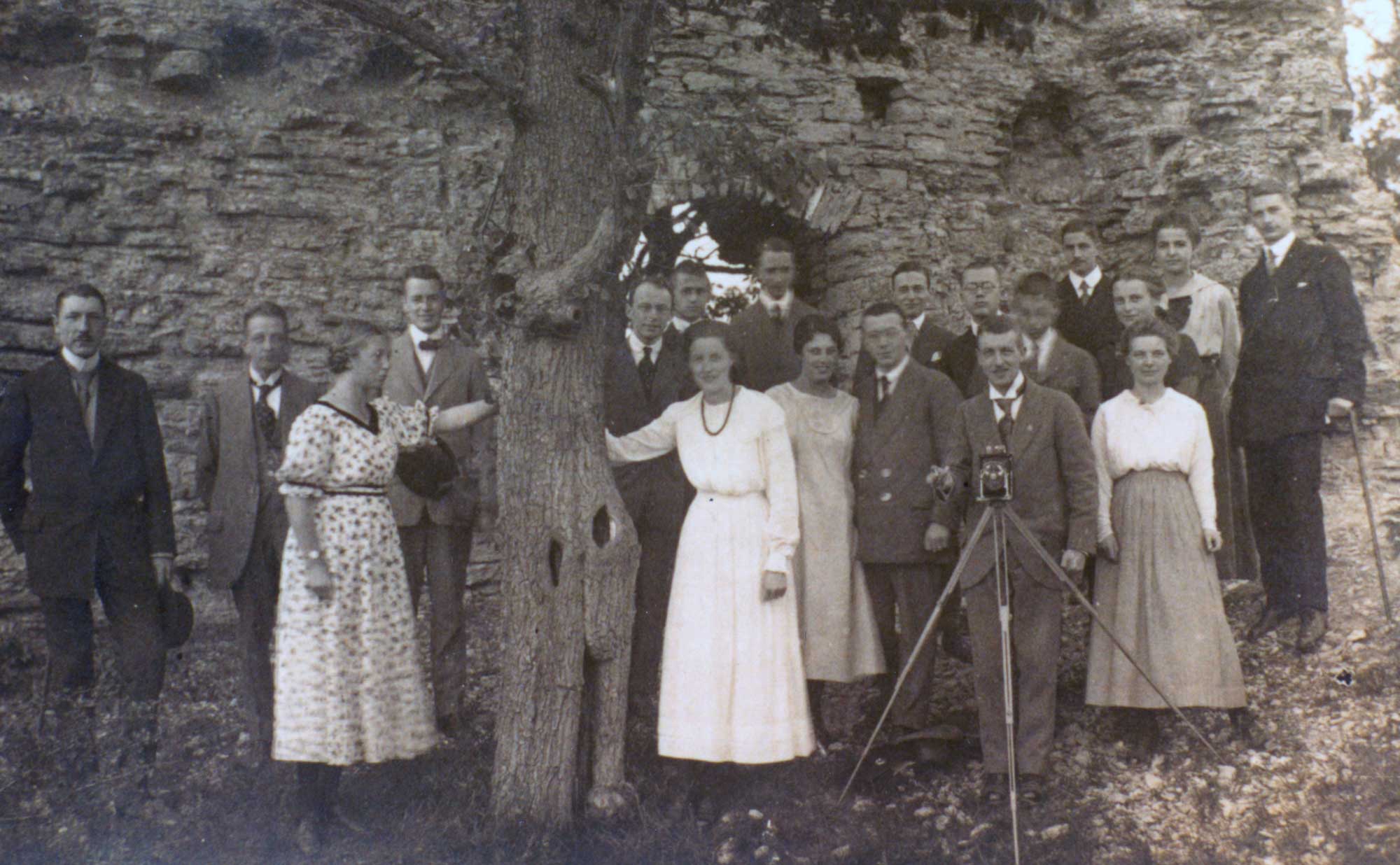
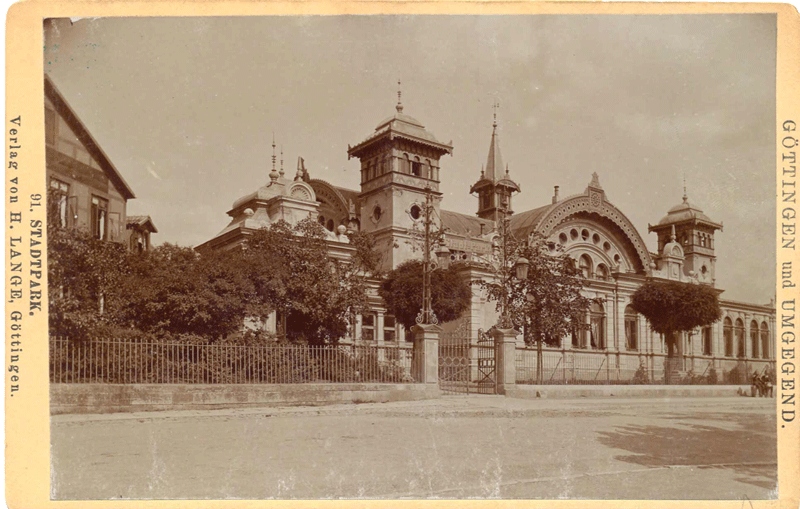
The municipal theatre reopens already in the year 1919. They even expand their offer. As of the year 1920, an opera and operetta division is added. The Stadtpark in front of the Albanitor is played at again. This is an event building offering varied programs for the wide public.
Cinemas are very popular. Cinemas opened before the war like the Eden in the market place and the Central in the Barfüsserstraße are now extended. The Central eventually holds 450 seats. 1929 opens the Capitol in the Prinzenstraße with 500 seats – and Göttingen has merely ca. 40,000 inhabitants! In addition, there are film shows in the Urania in the Ottfried Müller house and in the Volkshaus in the Wiesenstraße.
Historian and former Director, Städtisches Museum Göttingen
The new mass medium film is accompanied by new impressions and viewing habits. “The cabinet of Dr Caligari”, an expressionistic film, celebrates great success in the year 1920.
Göttingen isn’t Berlin – but the “Golden Twenties” cast a modest reflection on our small town, too.
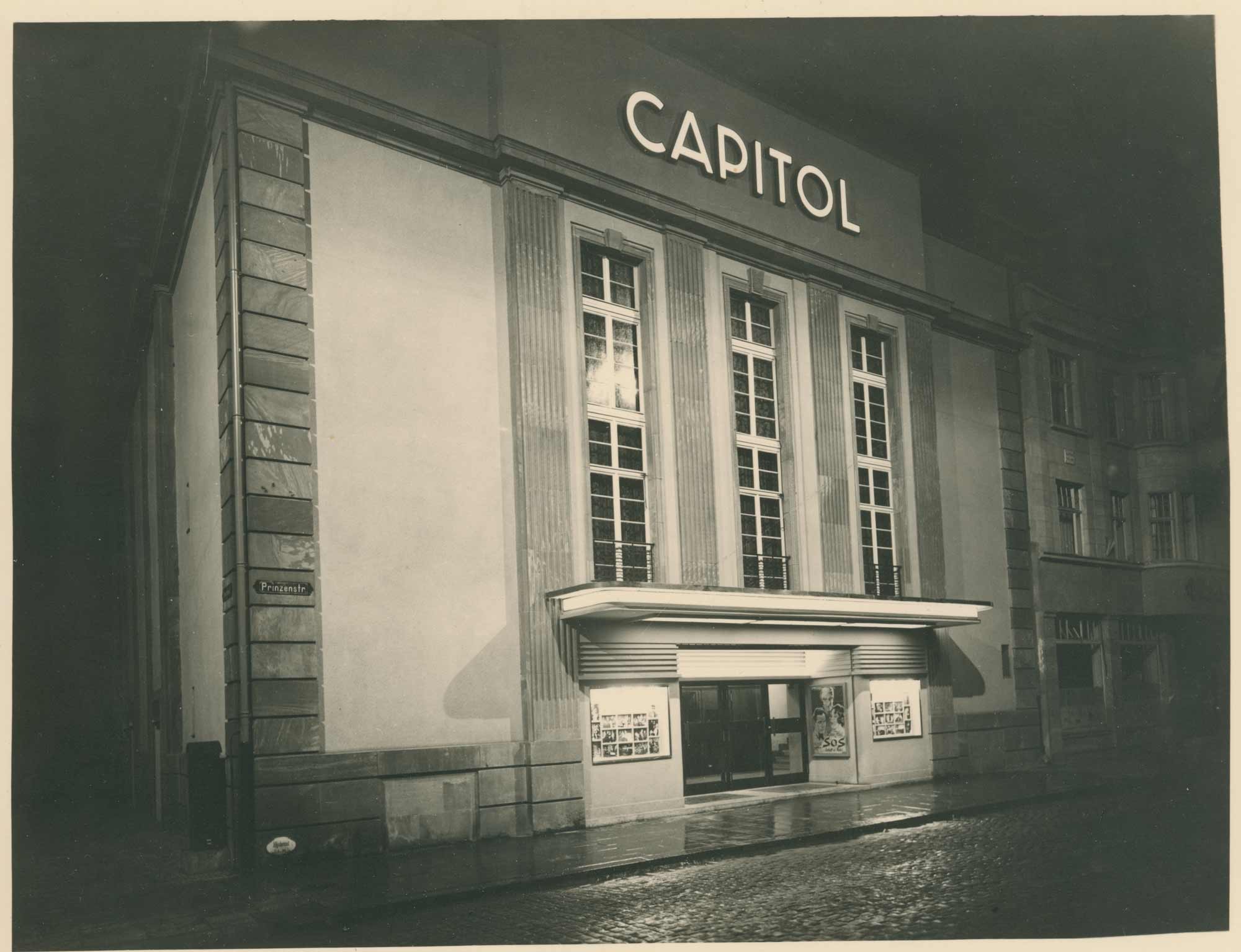
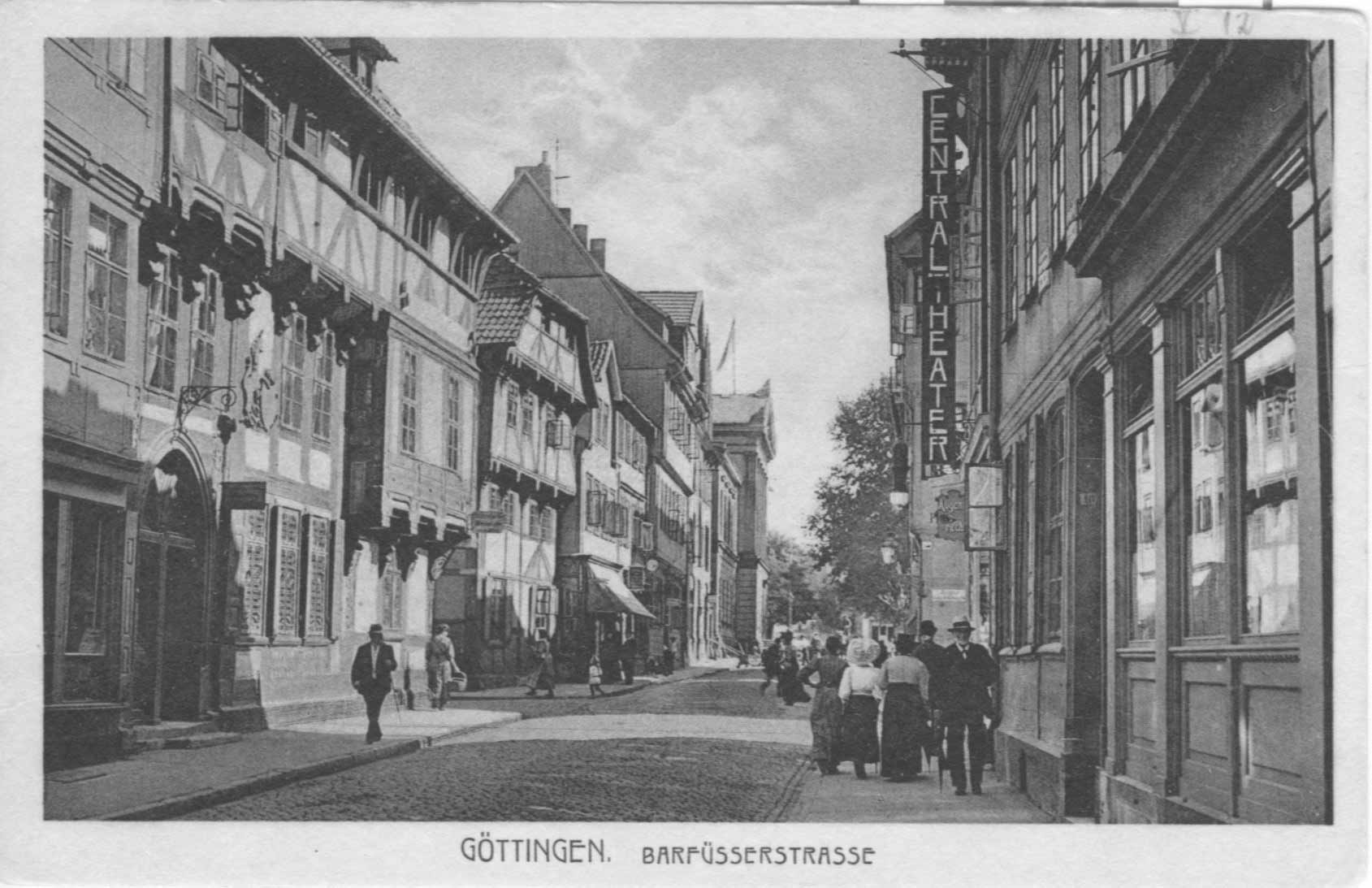
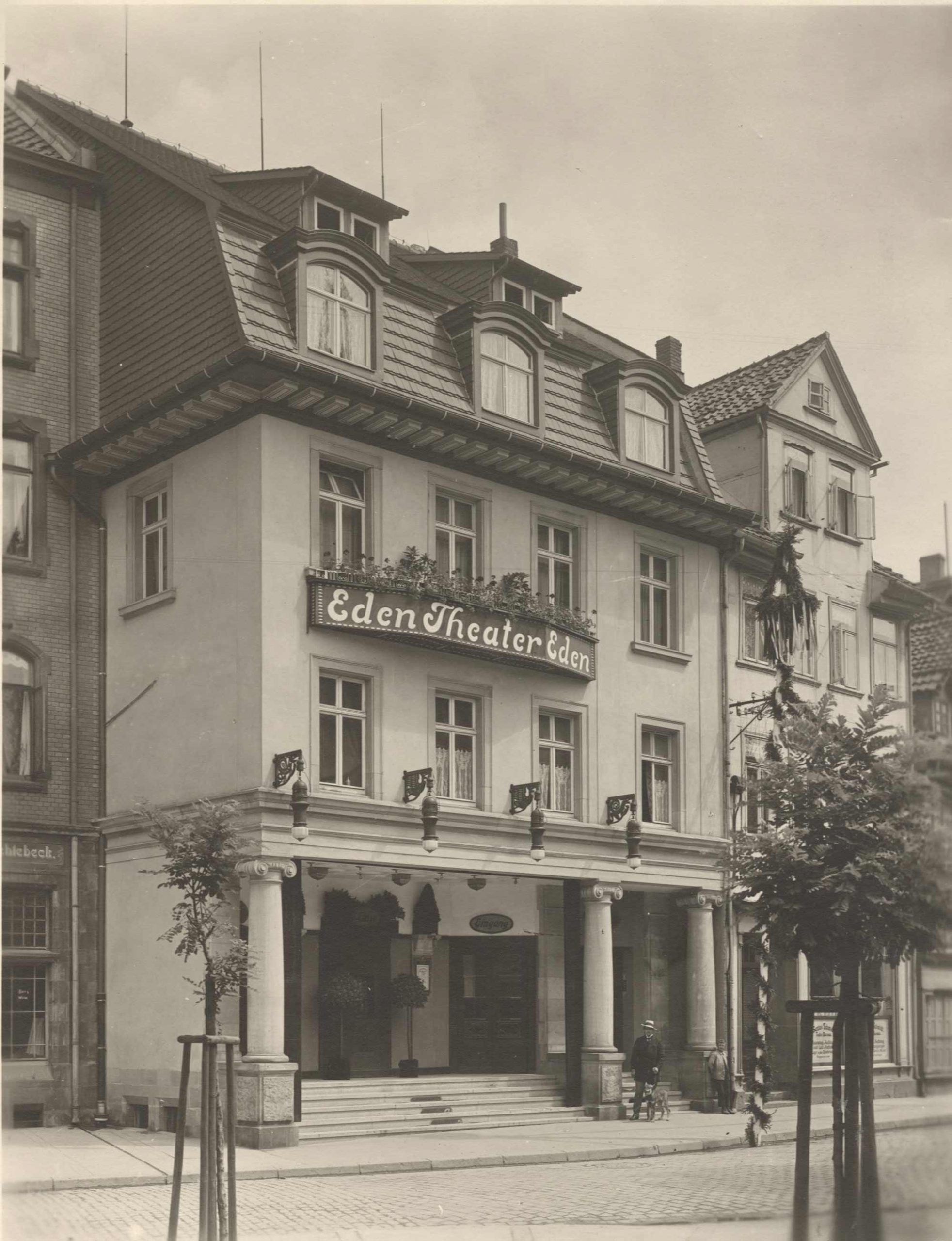
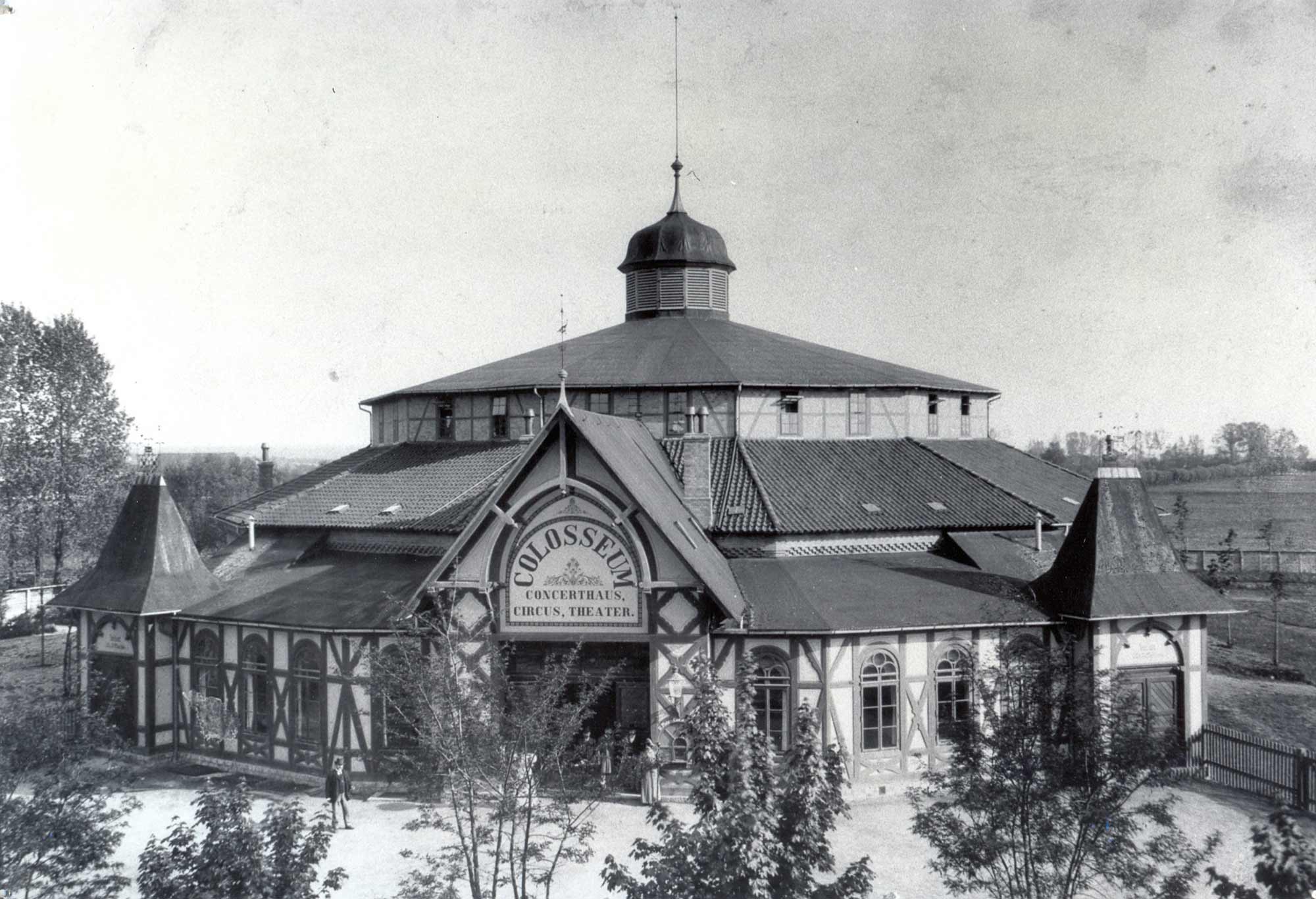
These are the socio-political foundations which the ‘Göttingen Handel Renaissance’ and the Göttingen International Handel Festival emerged out of 100 years ago.
Learn more about the people and the institutions involved, the first performance of Rodelinda, and the fascinating history of the Göttingen International Handel Festival in chapter 2.
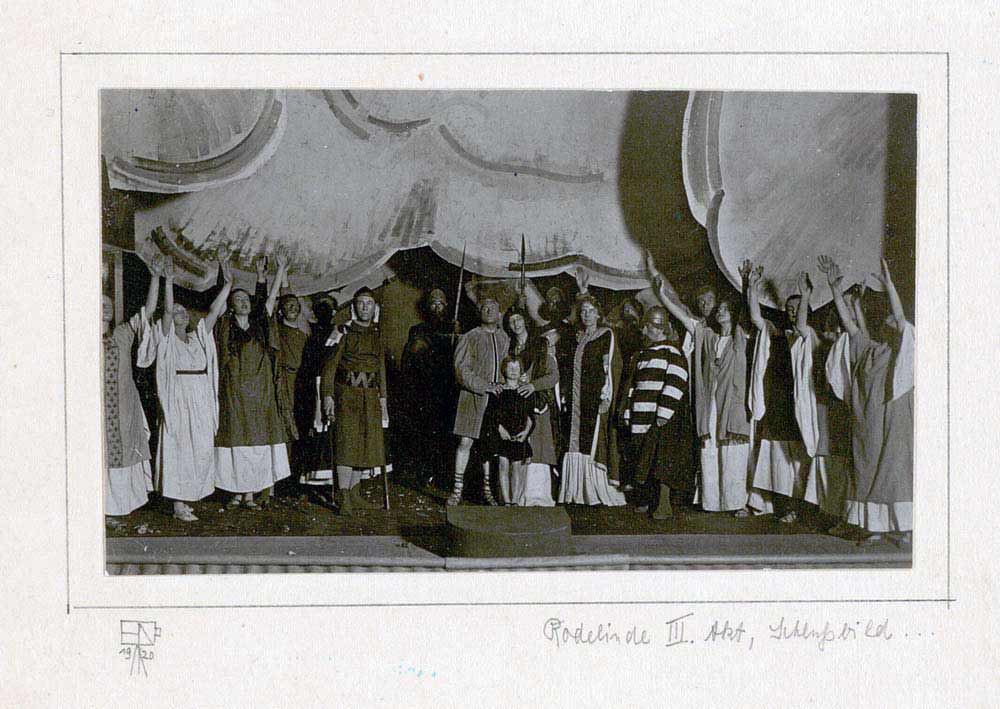
Chapter 2
The performance of the opera Rodelinde in 1920
2.1 A network of dedicated persons and institutions
Oskar Hagen
A music-enthusiastic art historian
Oskar Hagen (1888-1957) is regarded as the founder of the Göttingen Handel Festival. He studies art history and musicology in Halle, the city of Handel’s birth. Here, he becomes acquainted with Handel’s opera scores and is thrilled by the pieces. As of 1918, Hagen is a private lecturer of art history in Göttingen. He is married to Thyra Hagen-Leisner and has two children with her.
In the year 1919, Hagen assumes the position of the conductor of the Akademische Orchestervereinigung. Here, he meets Alfred Bertholet who is the chairman of the music committee of the Universitätsbund.
In a home-music circle he makes music together with Alfred Bertholet; they jointly rehearse arias from Handel operas with Thyra Hagen-Leisner singing. As early as in the year 1919, they perform some of those arias with the Akademische Orchestervereinigung.
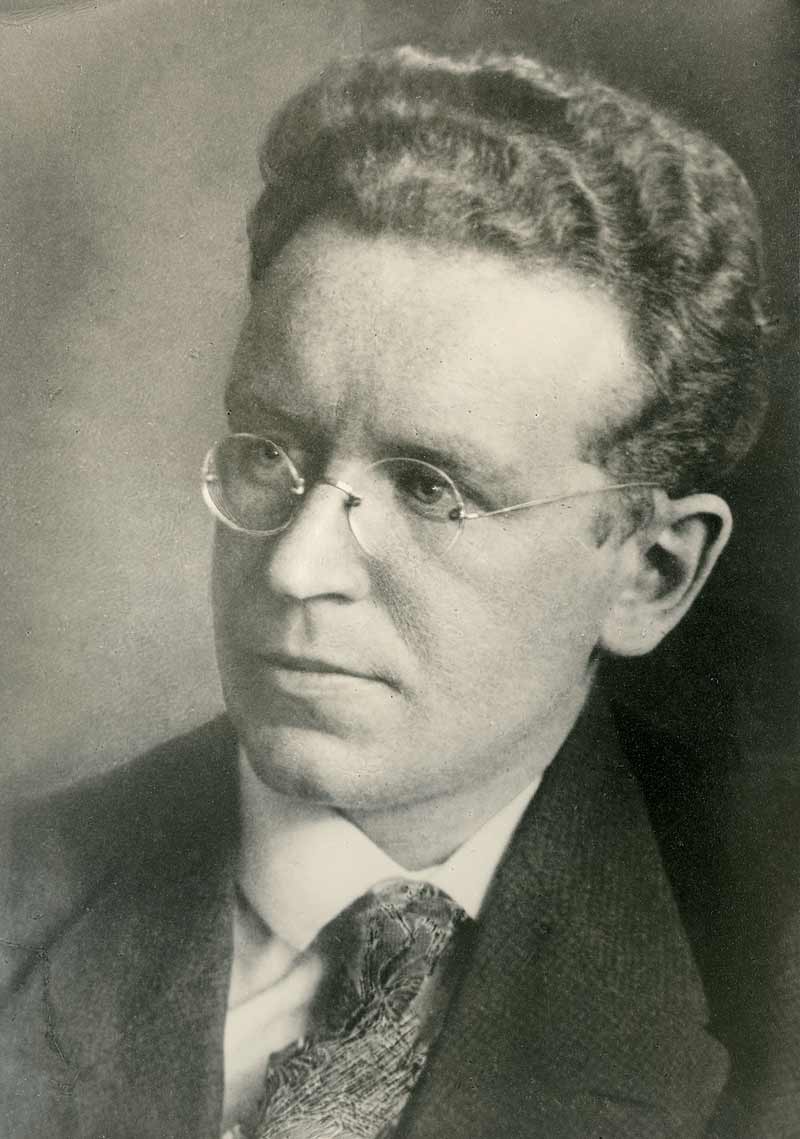
Bertholet has the idea of putting a Handel opera on stage. Oskar Hagen is thrilled. Hagen becomes he who presses ahead with the realization of this idea. He finds many supporters for that in his circle of acquaintances. He adapts the music and makes many deletions, particularly in the arias, but adds new ones as well.
The revival of Rodelinde in the year 1920 constitutes the “Göttingen Handel renaissance” (renaissance = rebirth). This rebirth has many helpers: People, institutions, and the special social situation of that time and in this town.
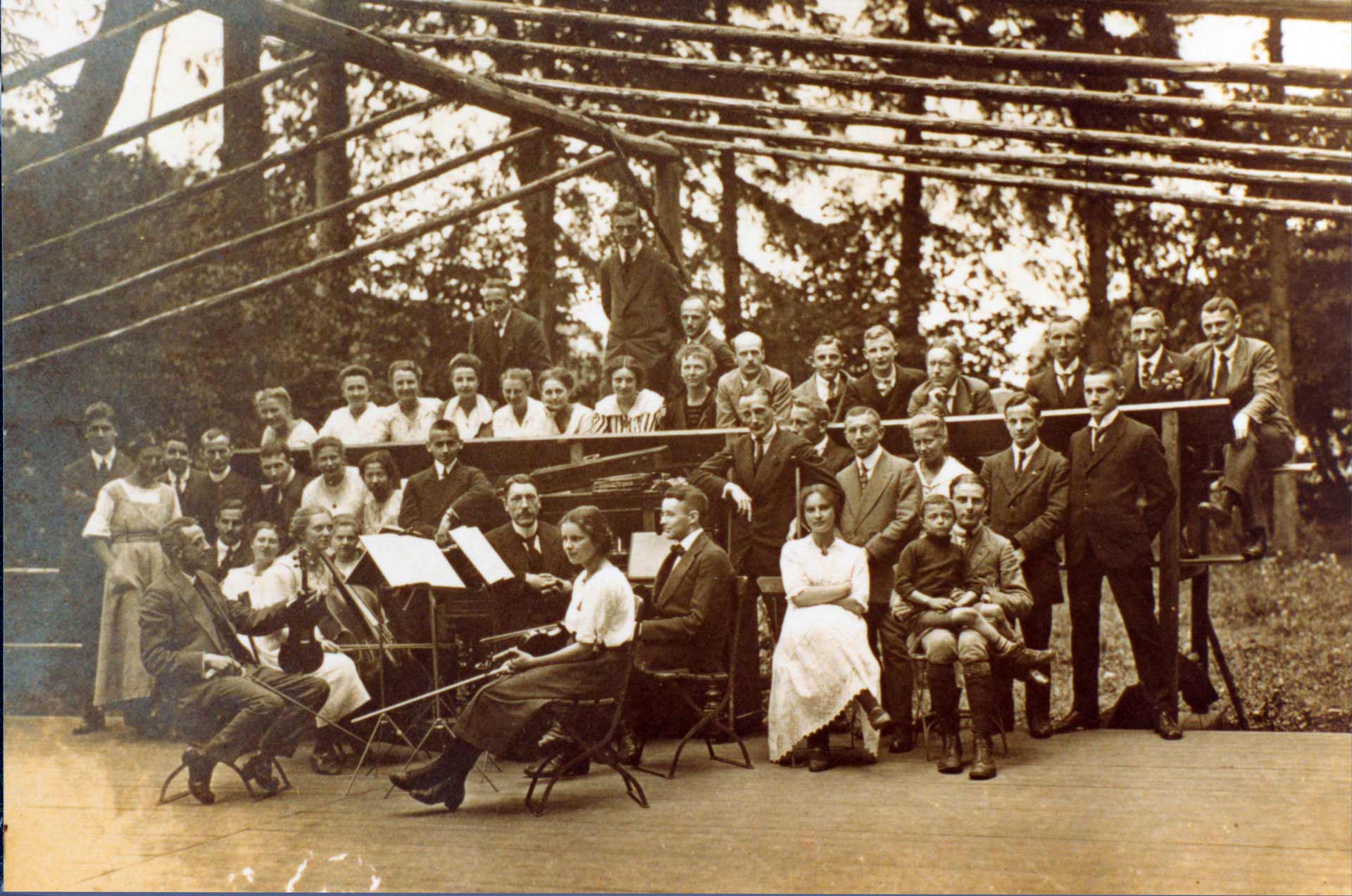
The Akademische Orchestervereinigung (AOV)
»Chattering during rehearsals is vehemently disapproved«
This remark is to be found in the minutes of December 14, 1904 taken at the gathering of students making music. This group aims at rehearsing works of modern and classical composers. In the year 1906, this student group gives themselves statutes but wants to remain a more loose association nonetheless. However, lecturers, professors and non-academics can now play in this orchestra, too.
From 1914 until 1918, the joint activities are interrupted by the war, too. As of the summer term 1919, the rehearsals are resumed. The newly founded Universitätsbund takes care of the financial support. Former and a good many new musicians – also from the lecturers and the civil society – facilitate a good size of the orchestra. The private lecturer Oskar Hagen assumes the position of the conductor. The Akademische Orchestervereinigung plays Handel’s opera Rodelinde.
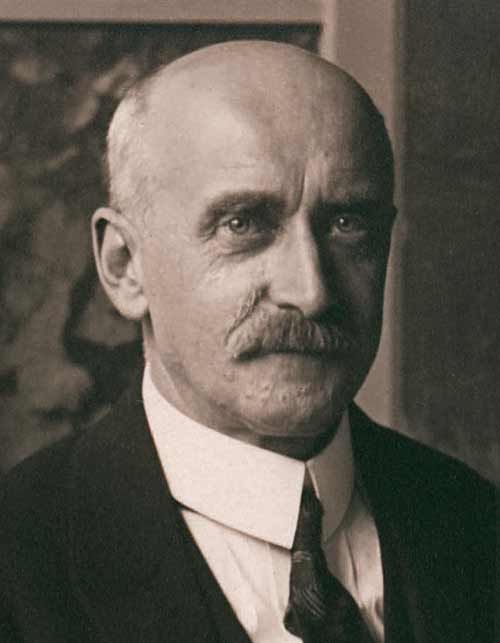
Alfred Bertholet
»…a musical event of the first rank«
Alfred Robert Felix Bertholet (1868-1951) is professor of religious history. He lectures from 1914 until 1928 at Göttingen University. The Swiss Bertholet makes music together with Oskar Hagen in the Akademische Orchestervereinigung. In addition, both play in a private home-concert circle.
Bertholet is the first who has the idea of an opera performance. He supports this project from the very beginning. He is the chairman of the music committee of the Universitätsbund founded in the year 1918. He is successful in raising the financial support of the Universitätsbund. The performance of the opera Rodelinde is sponsored with 20,000 Mark.
Musicologist
Department of Musicology
University of Göttingen
The Universitätsbund Göttingen
»Promotion of science, culture and for the benefit of the students«
Founded in the year 1918, the Universitätsbund assumes the duties of a support association. As such, the association first and foremost raises funds. In addition, they want “to maintain the communal spirit of all former and current members of the Georgia Augusta”. The association publishes own scripts and newsletters and expressly supports students, lecturers, academic back staff and institutions. As early as in the year 1919, research projects, lectures and publications are promoted with the aid of the funds raised – and a film projector is bought for the university.
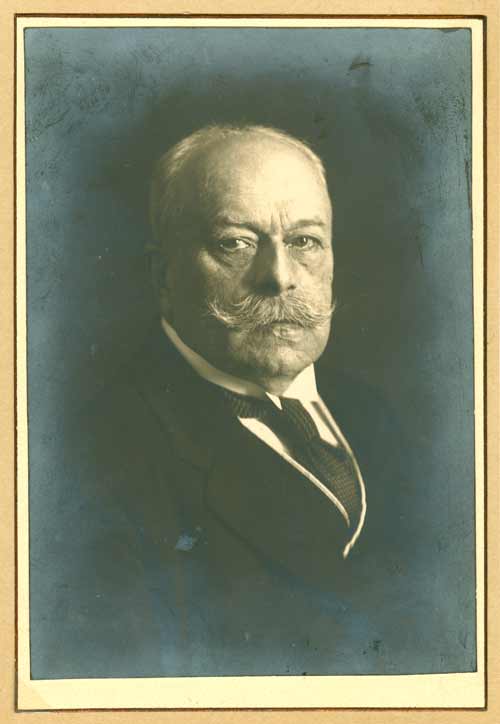
Oberbürgermeister Georg Calsow
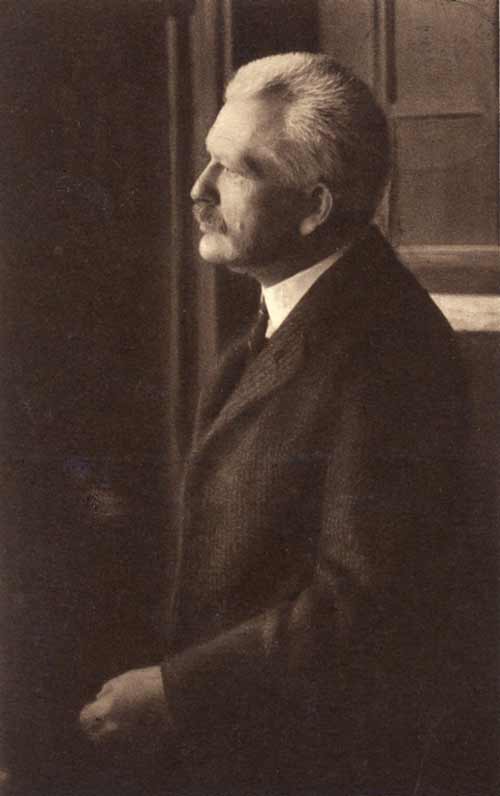
Karl Brandi, chairman
The Universitätsbund is open to the urban society. The membership list includes: Göttingen merchants, bankers, manufacturers, craftsmen, priest and parsons, generals, teachers, lawyers, pharmacists and a good many other professional groups. The mayor Georg Calsow is a member of the board and deputy chairman. In the year 1919, the Universitätsbund has 429 members, in 1921 already 701 members.
The civil and academic society of Göttingen is assembled in the Universitätsbund. They also form the audience of the Rodelinde performance. On 17 February 1920, the evening of the annual general meeting of the Universitätsbund is set for the first performance. Audience is therefore provided.
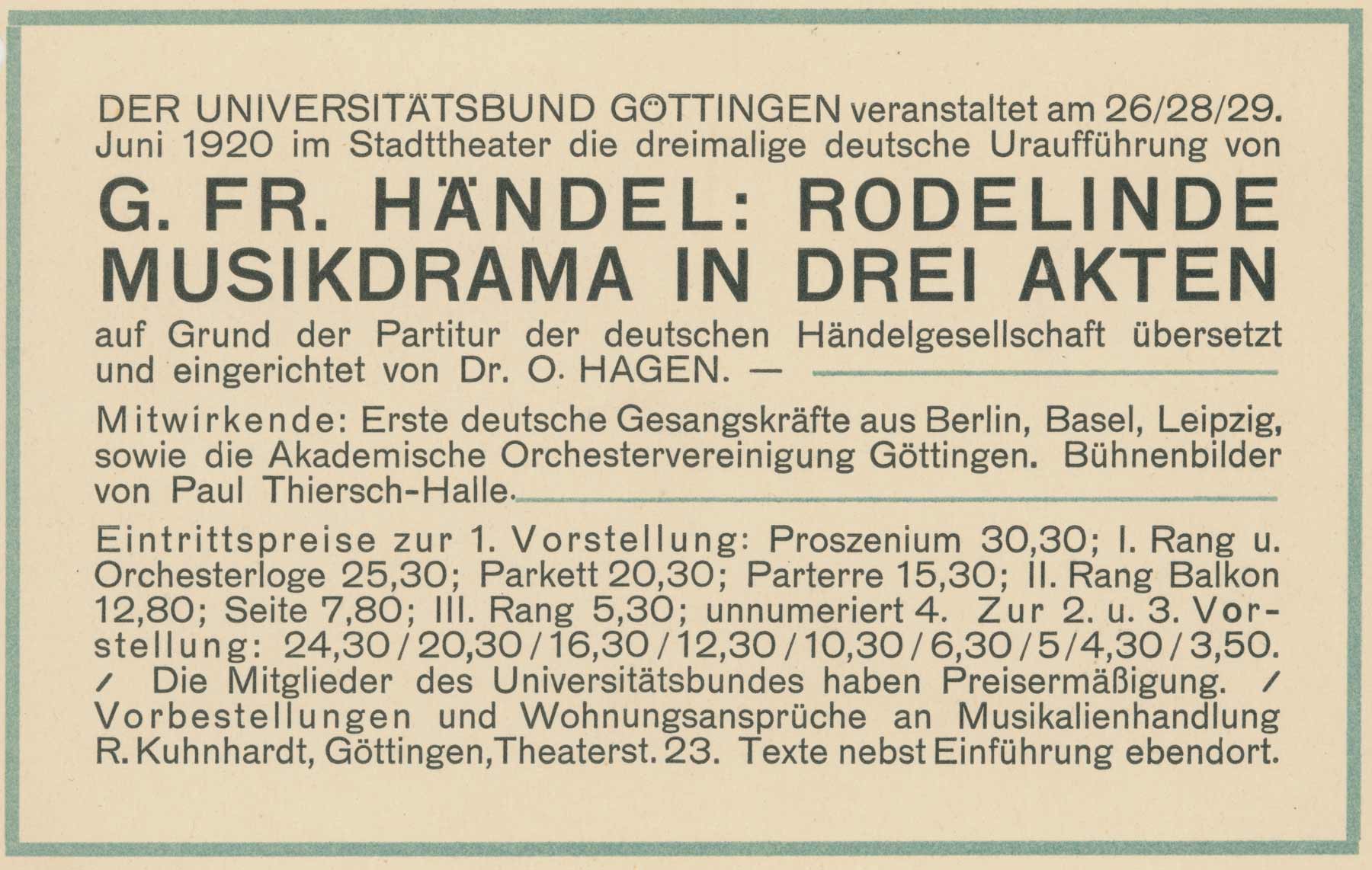
Christine Hoyer-Masing
Who was the director in point of fact?
Direction of performance: Christine Hoyer-Masing (1888-1932). So says the programme on the Rodelinde performance. Hoyer-Masing learns rhythmic dance according to the Dalcrozeschool. Émile Jacques-Dalcroze teaches the interaction between music and dancing expression. Hoyer-Masing is not mentioned in the reports on the Rodelinde performance. Nor is she mentioned in the recollections of the contemporary witnesses. No photograph of her exists.
Still in October 1920, Oskar Hagen writes a report on the performance of the opera Rodelinde in the newsletter of the Universitätsbund. She is mentioned there as a performer. However, nothing is said about her work. Hagen gives rise to the impression that he alone is the artistic director. This perspective is assumed by other persons involved, too, and so is adopted in the history of the Handel festival. Christine Hoyer- Masing falls into oblivion. In the years 1920 and 1921, Hoyer-Masing is responsible for the choreography and direction of the opera performances in Göttingen.
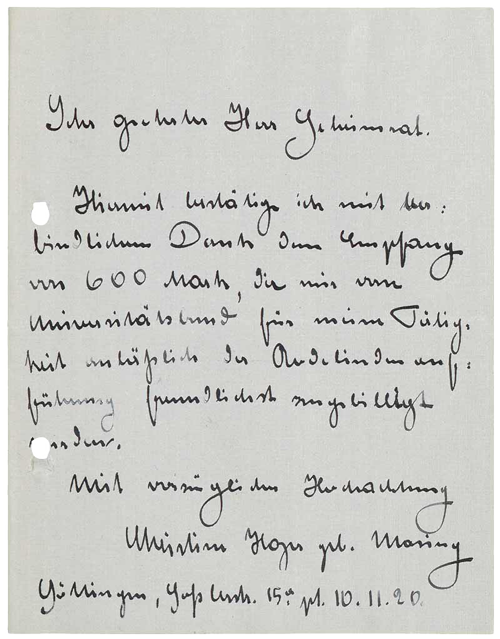
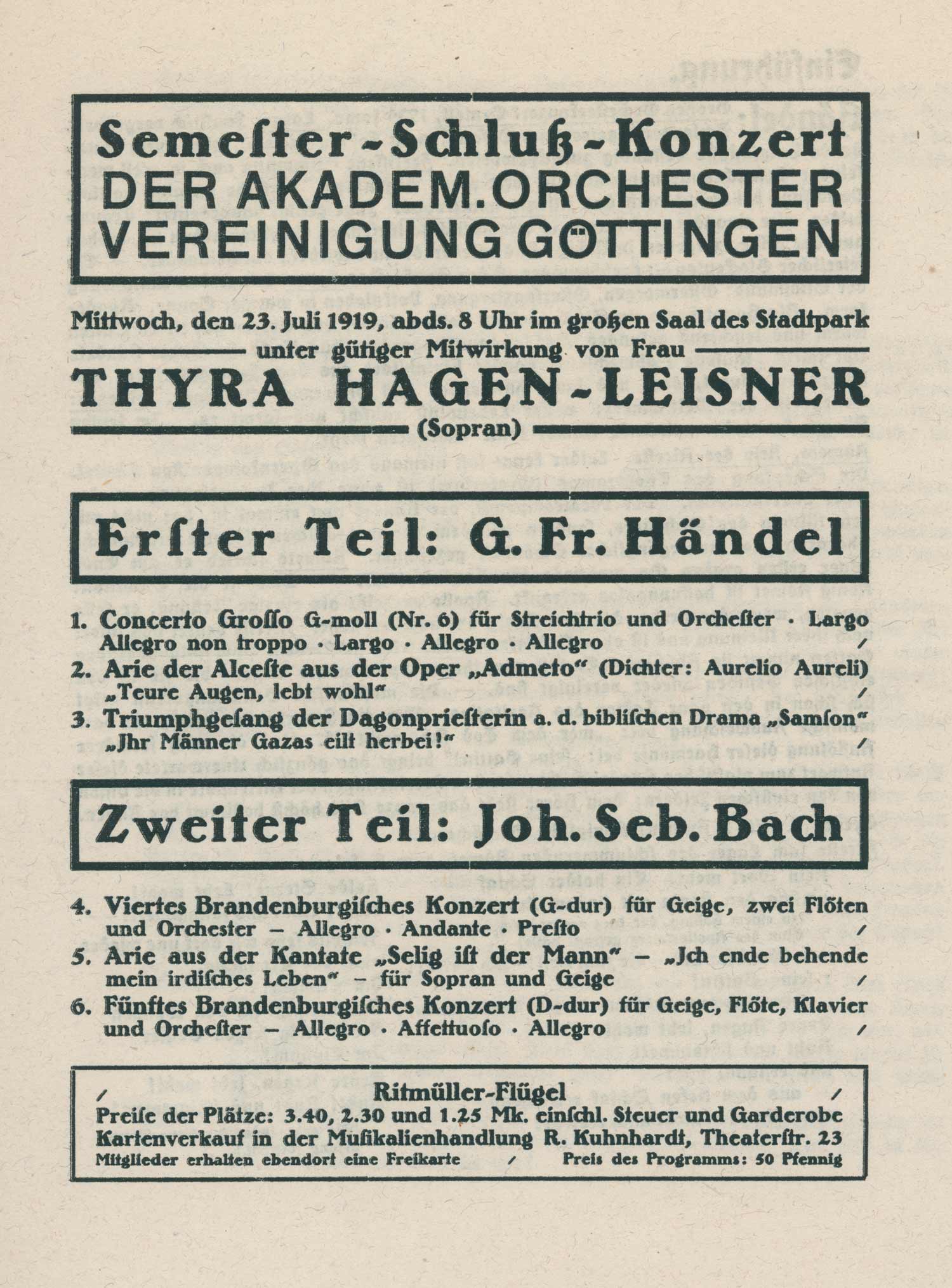
Concert announcement of the AOV,1919
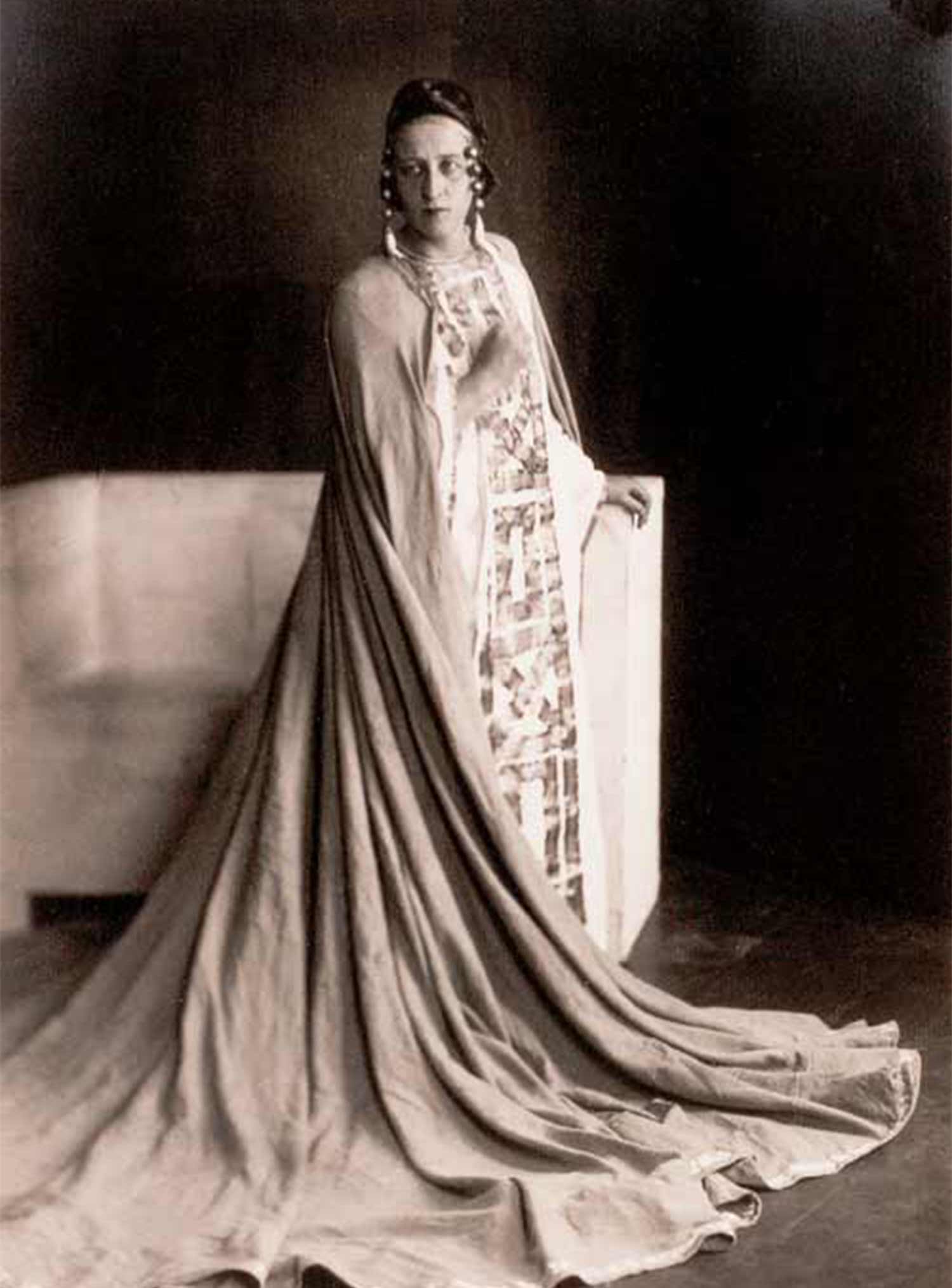
Thyra Hagen-Leisner as Theophano,
Ottone,1921
Thyra Hagen-Leisner
On stage and yet in the shade
Thyra Hagen-Leisner (1888-1938) is a soprano. In the year 1920 she acts and sings the part of Rodelinde in the first performance. The critics praise her singing and theatrical performance. Thyra Hagen-Leisner is married to Oskar Hagen and sings the main female parts in the first four Handel operas staged in Göttingen. Appearances are also known within the scope of concerts given by the Akademische Orchestervereinigung. In the house concerts with Oskar Hagen and Alfred Bertholet she takes on the singing. There isn’t much more to learn about her.
In the minutes of the Universitätsbund she is mentioned as the translator of the Rodelinde libretto (= lyrics). Handel wrote his operas in Italian as was customary in his day. Rodelinde is sung in German. After the success of the Rodelinde performance, Oskar Hagen writes a detailed report on his adaptation of the opera. He doesn’t breathe a word about the work of his wife. Nor do the other – male – contemporary witnesses mention that Thyra Hagen-Leisner has translated the Italian texts. Any proofs of Thyra Hagen-Leisner’s further participation in the first Handel festivals in Göttingen are not to be found. It must be assumed, though. Probably, she still participates in the adaptation of the opera and the organization of the festivals. Better known than Thyra as a singer is her sister, the alto Emmy Leisner. In the next room of the exhibition, you can hear an extract from Rodelinde performed by her. The research concerning women productive in music is just in an early stage. They come out of the shadows only slowly.

As Cleopatra in Julius Caesar, 1922

Minutes from the Universitätsbund board meeting on 17 February 1920
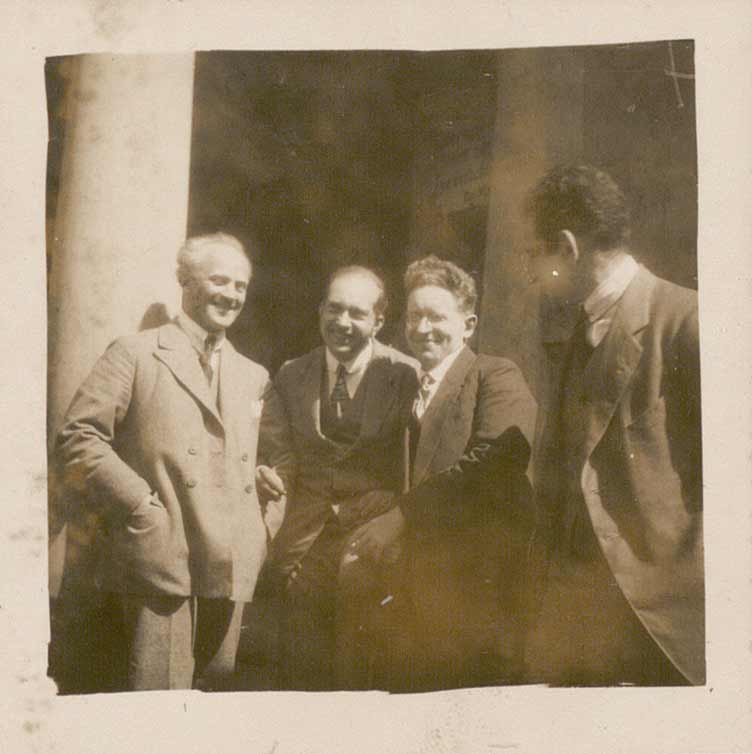
l. to r.: Paul Thiersch, Hanns Niedecken-Gebhard, Oskar Hagen (supposedly 1922)
Paul Thiersch
»To render the poetry visible via the stage setting«
Paul Thiersch (1879-1928) and Oskar Hagen get to know each other in the year 1917 in Halle. Thiersch is an architect and in charge of the arts school there. In Halle, Oskar Hagen works for him. He assumes the management of the library and publicly lectures at the public arts school. Just a few architects’ plans drawn by Paul Thiersch are realized. He turns to scenography and starts a class for set design.
Since 1919, Thiersch has designed the stage settings for the local theatre in Halle. Oskar Hagen wins him over to design the stage for the Rodelinde performance. Thiersch arrives with his pupils from Halle. Together with them he erects the stage setting in Göttingen. Hagen and Thiersch share the belief that they do not want to reconstruct the Baroque world. By means of modern tableaus they want “to give old works back to contemporary life”. Paul Thiersch will design the stage settings for the first four Handel operas staged in Göttingen.
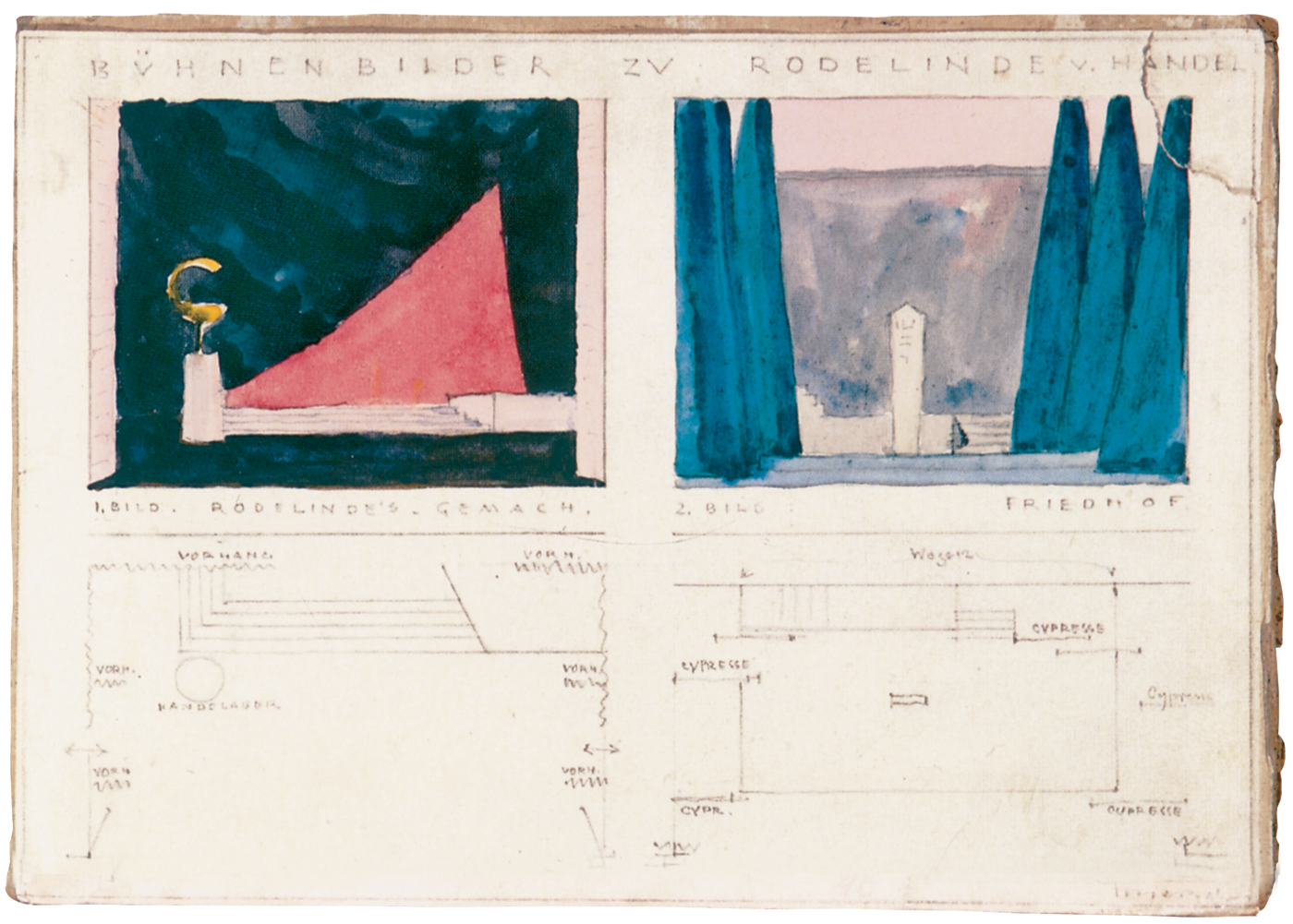
Stage design for the third season of Rodelinda by Paul Thiersch, 1923. Rodelinda was performed at the Festival in 1920, 1921 and 1923. The stage design was altered and further developed each season.
2.2 Expressionism
The inward outwards
The word is composed of the Latin ex = from and premere = press. Hence, literally translated: to express. Expressionism means: The reality felt inside is shown to the outside world. The own state of mind and own emotions are transformed artistically. A realistic image of the reality is quite immaterial.
This new style unfolds at the end of the 19th century, firstly in painting, graphics and literature but then in architecture, music and dancing, too. Something familiar is shown in an alienated way and, therefore, facilitates new vision. The classical modern era starts with the expressionism.
Soon after the end of World War I, the painting of the expressionism is replaced by other styles. The expressionism continues to have effect in literature, film, theatre and architecture until World War II. Particularly through the new medium film, many people become acquainted with the elements of this style.
Bühnenbilder und Entwürfe von Göttinger Händel-Aufführungen
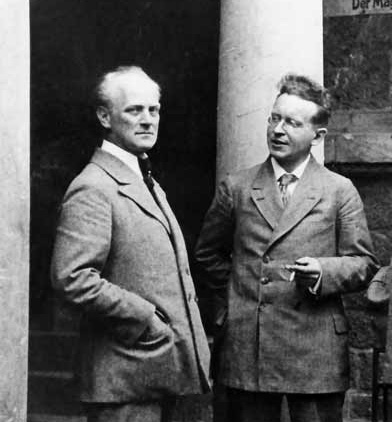
Paul Thiersch (l) and Oskar Hagen (r)
Händel expressively
»For the modern man«
»It seems to me that the stage settings made by Paul Thiersch favorably reflect the music of Handel« writes Oskar Hagen in the year 1920. Hagen and Thiersch deliberately do not want to put the baroque world on stage.
Hagen believes that the music of Handel meets the »ideal of the most modern expressionism«. He sees a »psychological drama« in the arias. From his point of view, the extensive »amplifying« of the coloraturas provides the arias with an expressionistic character (coloratura = singing with a quick sequence of notes; several notes jointly fall onto the vowel of one syllable). »Understood in this way, the pictorial expressionism is very well reflected in the operas of Handel.«
But not only shall the stage setting be expressionistic but also the body language. Hence, motion and dancing also form part of the artistic expression of Handel‘s music. Oskar Hagen repeatedly emphasizes that he adapts the operas for the modern human.
Architecture and the stage
Color, space, and play
Paul Thiersch actually is an architect. He becomes familiar with theatre constructions and designs already during his student days 1897–1904. He opens an own architect‘s office in the year 1909 in Berlin. Here, he comes in contact with the new reform movement. Most likely, he also goes to the theatre and sees the stage settings of the theatre reformers such as Max Reinhardt.
Stage design for Xerxes: The house of Ariodant, Paul Thiersch,1924
Since around 1900, the theatre reform movement has uncluttered the stages. The theatre pomp previously customary is given up. There is no longer any cluttered and detailed scenography, no pretending to be historically true. Abstract and sculptural architecture is realized. Terraces, walls and stairs open up new stage areas. Color, light and rhythmic dance-like movements shall transfer the mood, the idea of the play. This calls itself scenic expressionism. In Berlin, Frankfurt, Munich, and Vienna, this is already realized before World War I. Now, in the twenties, it arrives at the provinces too.
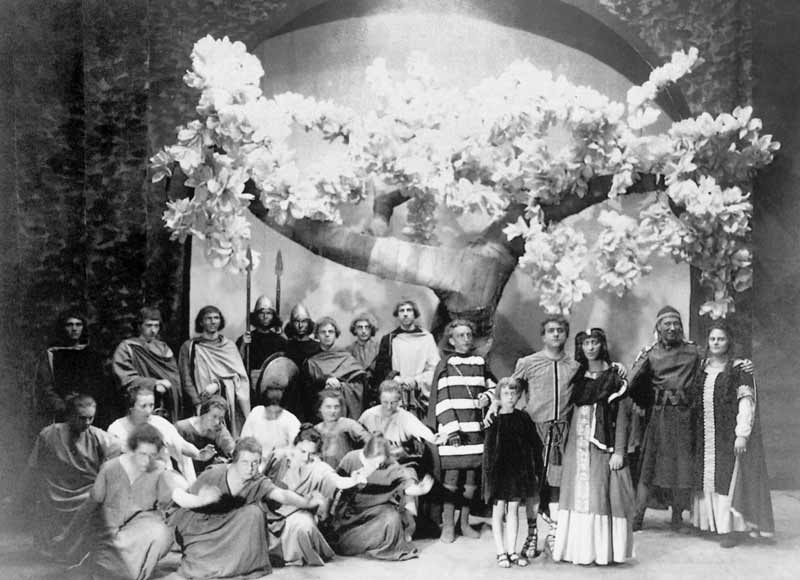
Final scene of Rodelinde reproduction 1921 at the Stadttheater Göttingen, stage setting by Paul Thiersch

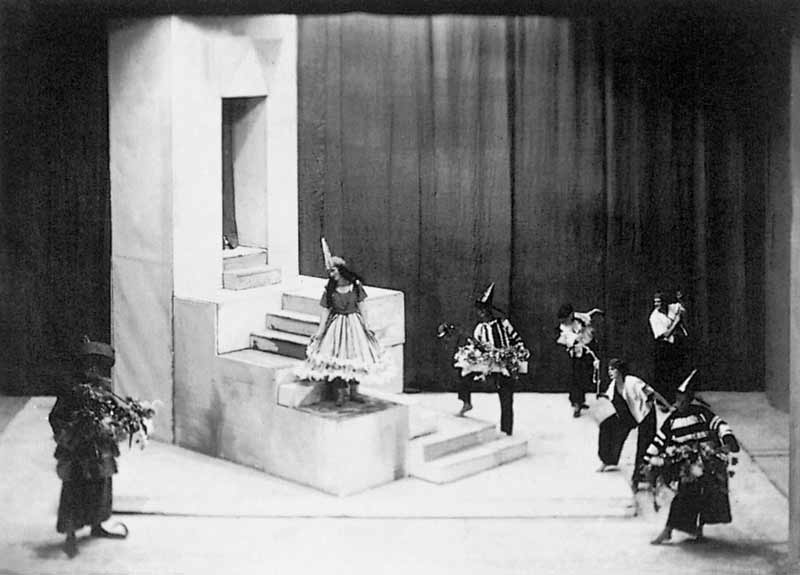
Stage setting from Xerxes at Stadttheater Göttingen, 1924
As of 1915, Paul Thiersch manages the school of arts and crafts Halle in Giebichenstein castle. Werkbund and Bauhaus are forming the idea of a cooperation between various crafts and arts. Thiersch fosters this idea in Giebichenstein too. In the year 1921, Thiersch establishes a class for set design in the department of architecture. As of the year 1919, Paul Thiersch designs the stage settings in the municipal theatre of Halle, as of the year 1920 in Göttingen for the Handel festival, and as of the year 1923 for the Old Theatre in Leipzig. To him, the stage setting has two functions. It shall be subordinate to the poetry and shall provide an increasing incentive to curiosity.
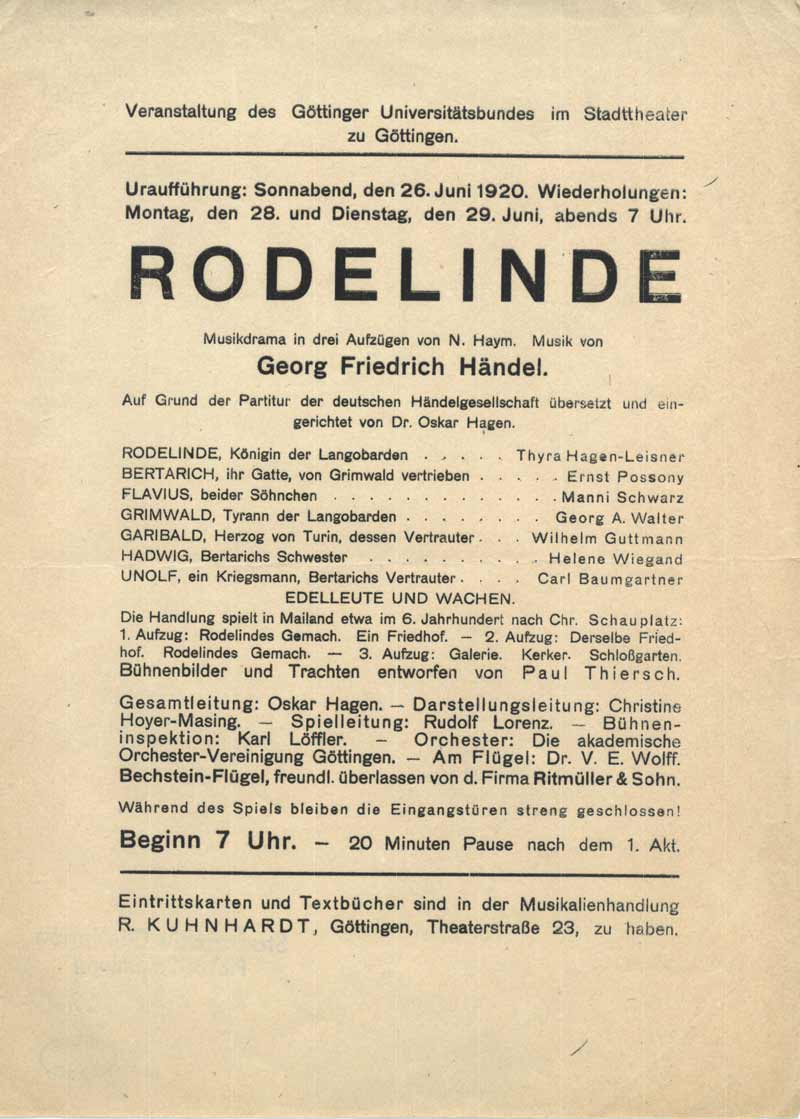
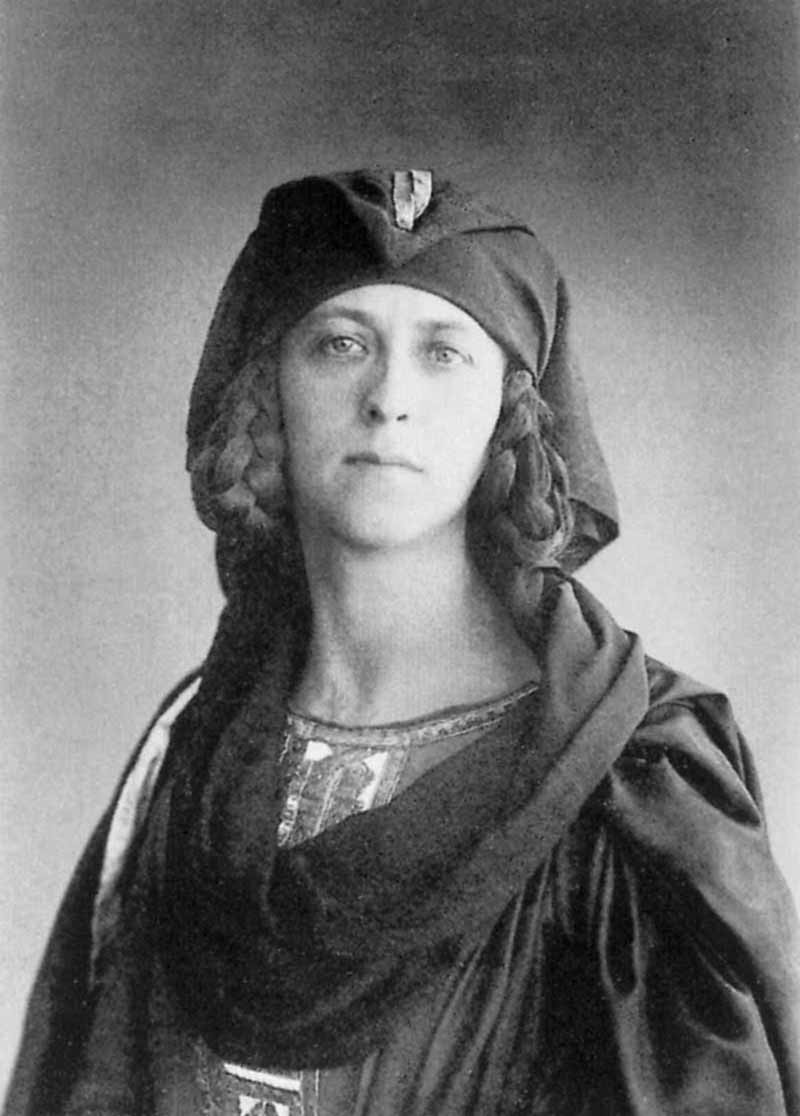
2.3 Rodelinda – Rodelinde
»Loveliest music and splendid intrigues«
Rodelinda is set at the Langobardic royal court in the 7th century. Central are: Rodelinda, seemingly widowed queen of Milan, Bertarido, legitimate king of Milan, Grimoaldo, usurper of the throne.
The triangle relationship of these persons is the heart of the storyline. Grimoaldo courts Rodelinda and offers her the crown. But Rodelinda is still faithful to her supposedly dead husband Bertarido. The conflict increases when Rodelinda recognizes that Bertarido is not dead. She has to make her choice: does she make certain of her own happiness with her husband Bertarido or does she ensure his safety by marrying Grimoaldo. The conflict is solved not until the end of the play when both conditions come true: Bertarido protects Grimoaldo against an attempt on his life – thereupon he gets back the throne. Now, Rodelinda and Bertarido can get together again.
Handel scores Rodelinda in 1724/25 for the Royal Academy of Music in London. This is an enterprise that offers Italian operas with all-star cast to the London audience. The libretto to the opera is written by Nicola Francesco Haym. He writes at least seven opera libretti for Handel, all in Italian language. Rodelinda becomes Rodelinde not until the translation into German is made.
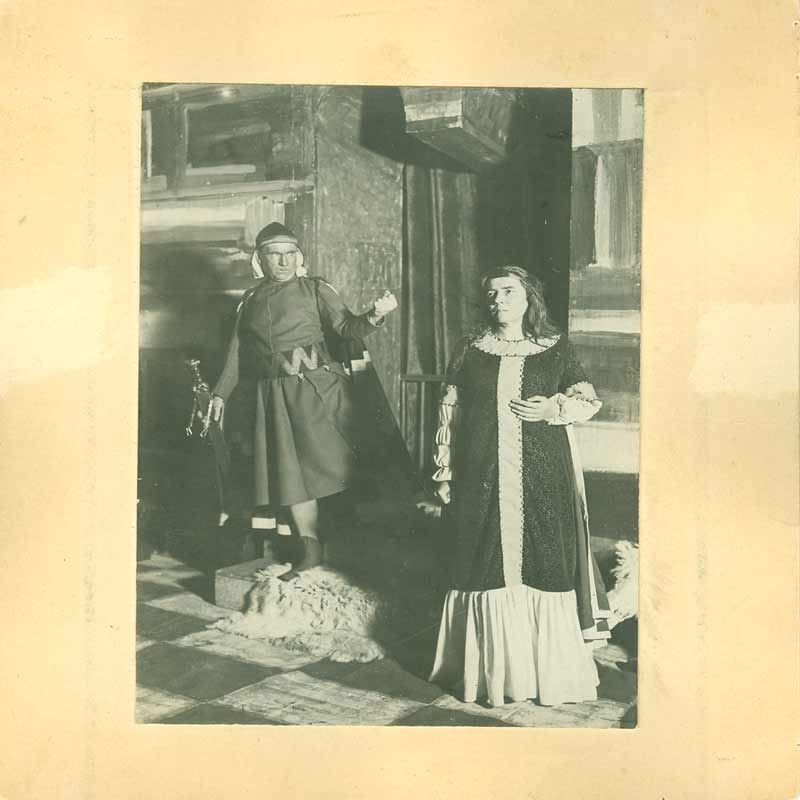
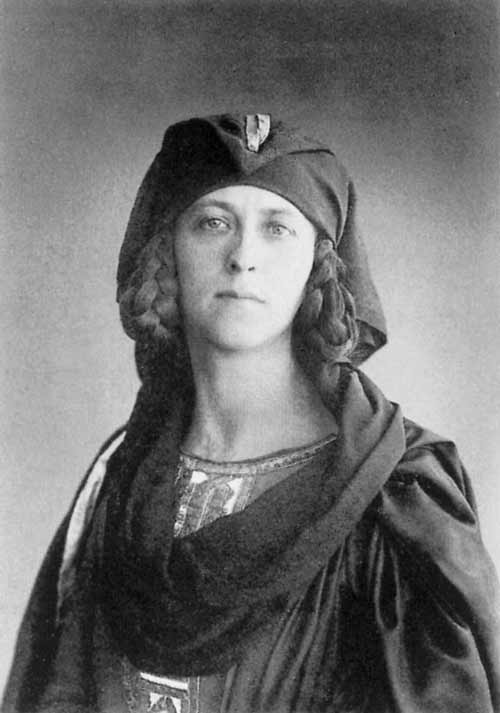
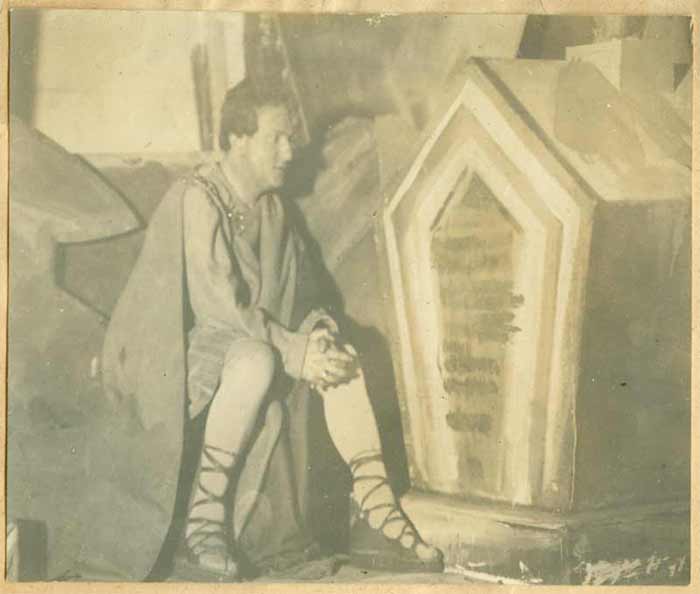
These were the most important individuals and institutions that, with the premiere of Rodelinda in 1920, contributed to the foundation of the Göttingen International Handel Festival. The expressionist performance marked the beginning of the ‘Göttingen Handel Renaissance’.
Chapter 3
The eventful history of the Göttingen International Handel Festival after 1926
»It may be said that the mental condition in Germany after the lost World War gave a particularly favourable ground for the rediscovery of Handel. His simplicity, his strength and greatness had something to give to many in this time of depravity and despondency, and after the loss of external power and greatness one took refuge in the inner spiritual realms and sought consolation and hope in the masterly depictions of human emotions in Handel operas.« Walter Meyerhoff, 1946
3.1 »That present-day situation«
The Treaty of Versailles and the “German Vision” by Oskar Hagen
In the year 1919, the end of the war is sealed by the Treaty of Versailles. The treaty declares Germany’s sole responsibility for the war having caused the death of tens of millions throughout Europe. The treaty binds Germany to cessions of territory, disarmament and payments to the former wartime enemies.
In Germany, the treaty is perceived as drastic, humiliating and unfair. This blow is expressed in an exaggerated nationalism, particularly in the civil society.
In search of new self-confidence art plays an important part. Art history tries to establish which works or artists are “German” or “Germanic”. It is worked hard on the myth of the nation of art and culture. Even music history has a try at academic derivations of the “German”.
In the year 1920, the book “The German Vision” by Oskar Hagen is published. Therein, he develops ideas regarding art that are severely nationalistic. He thereby moves within the research circles acknowledged in those days. But he even goes beyond that. By his theses “We [the Germans] think with our blood” he discloses a racist mind. There are similar trends in musicology. This also includes making demands on Handel – who lived 49 years in England – as a German composer.
In the year 1933, the third edition of the book “The German Vision”
by Oskar Hagen is published in Germany. Hagen who has already
lived in the United States since 9 years writes in the preface:
“The moment of this little book has come only now. It will, after the
feeling for the German nature has finally become awake throughout
Germany, encounter hearts that are more open than in the years […] of the national disunity[…].”
With that said, he clearly acknowledges
the National Socialistic ideology.
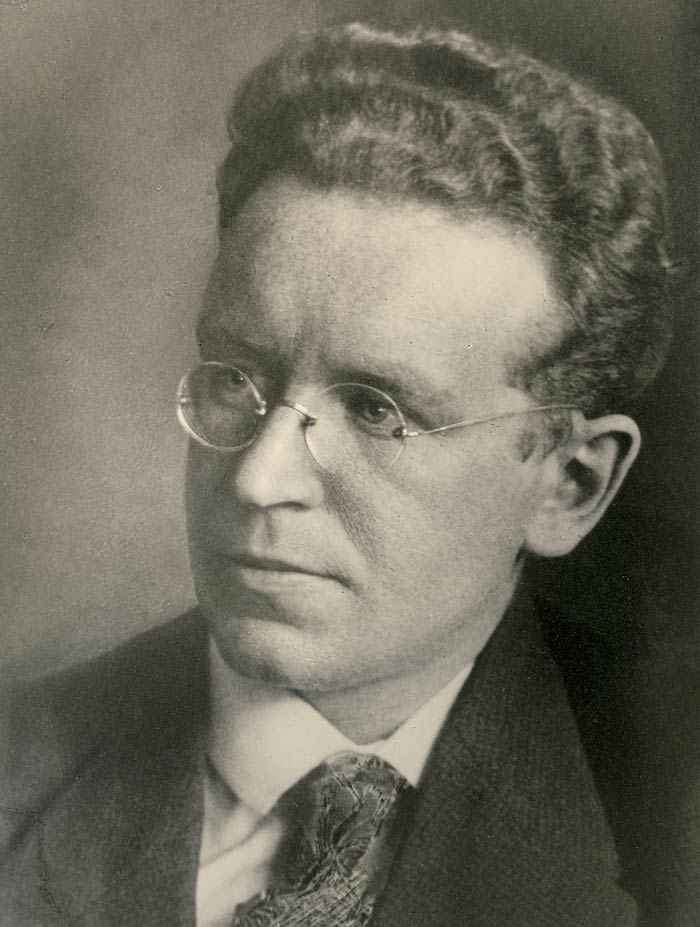
Oskar Hagen
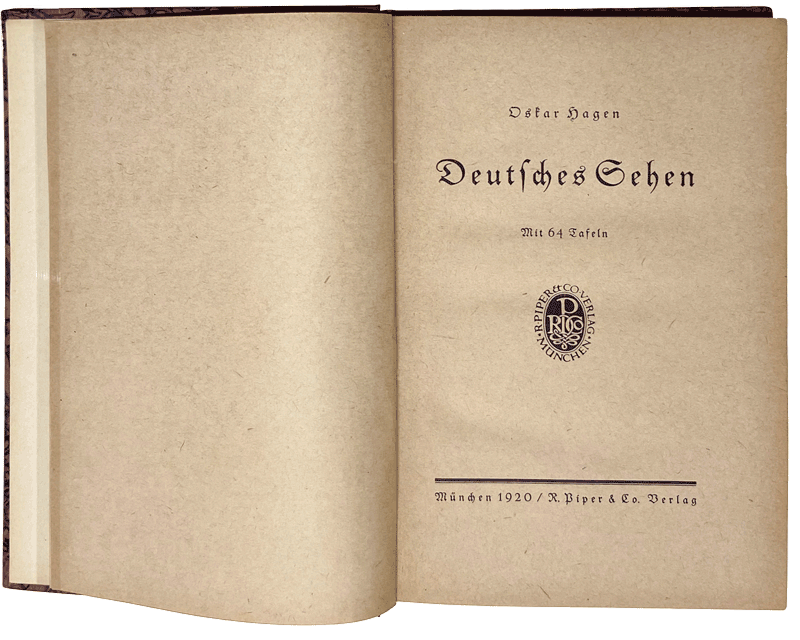
»The German Vision« by Oskar Hagen

George Frideric Handel
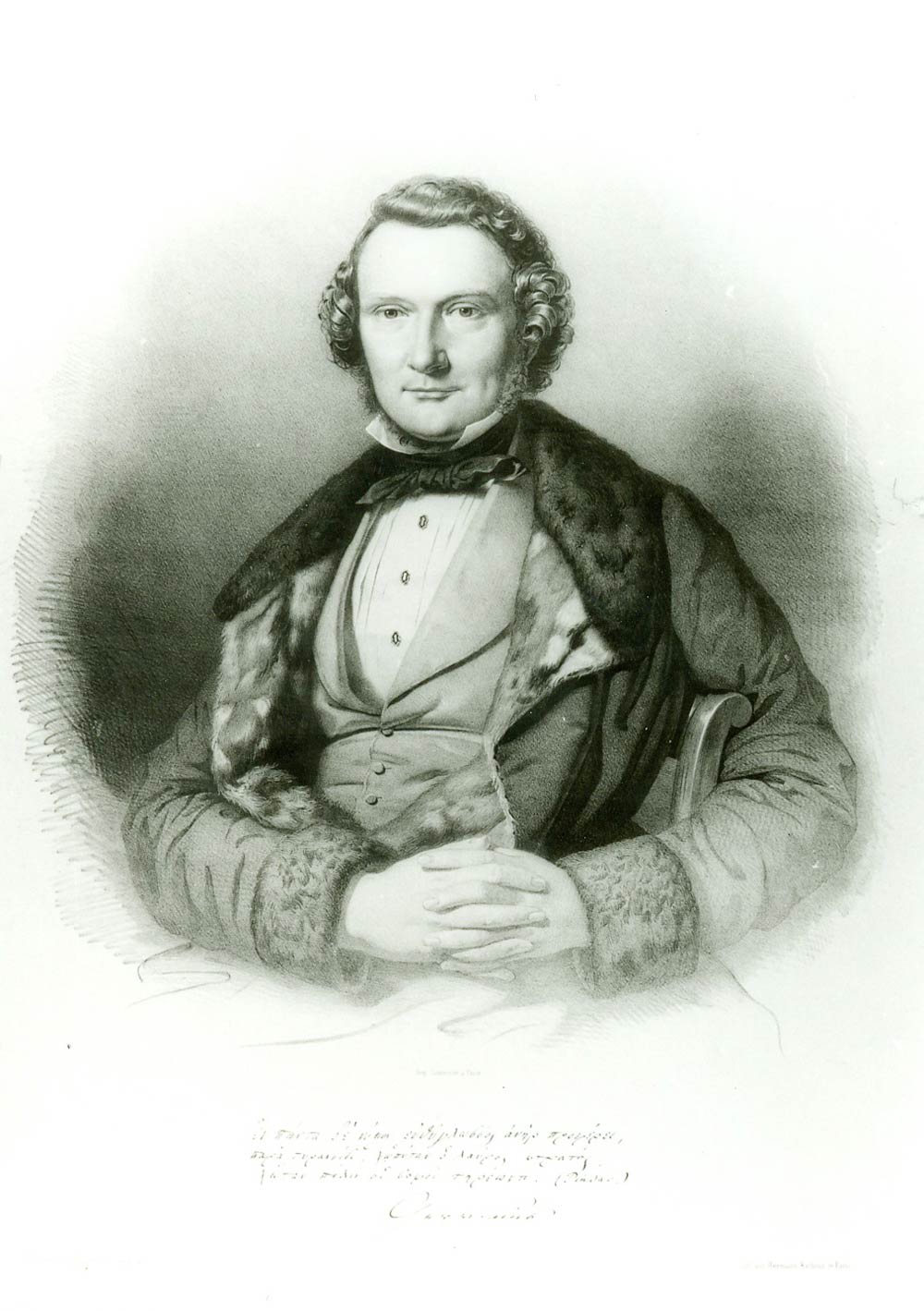
Gervinus Georg Gottfried
A plaster for the German soul –
Handel’s music
Much is read into Handel’s music – though with the exception of the “forgotten operas” at first. Greatness and dignity but also popular appeal is attributed to his music. It is regarded as a description of the condition of the German soul. This is particularly so in times of social and political changes.
Georg Gottfried Gervinus, professor of history, is one of the Göttingen Seven. In the year 1837, he is expelled from the country by the king because of his protest against the revocation of the constitution. In times of aberrations and commotions, so Gervinus, Handel’s music is a rescue for people in a crisis.
These interpretations are developed further during the Weimar Republic (1918 until 1933). In the year 1921, the music-historian Hermann Abert rates the Handel oratorios as the first democratic art form.
To Oskar Hagen, Handel’s music expresses the agony of the German soul after 1918 that suffers from the lost war and its aftermath. This interpretation is similar to the one applied after the end of World War II in the early Federal Republic.
The National Socialists see greatness and popular appeal united in Handel’s music. It thereby becomes the expression of the National Socialistic ideology of the “people’s community”. In addition, the baroque style in Handel’s day is, on the whole, interpreted nationalistically and as a “special performance of the German art”.
In the German Democratic Republic, Handel becomes an Enlightenment figure. Here, his oratorios express the ideas of “liberty, equality and fraternity”.
All these interpretations ascribe to Handel ex post facto to have composed exactly for these reasons. But this cannot be proven by any historical document. What can be proven is that Handel was an ingenious and very productive man as well as a gifted entrepreneur. As regards the style of his music, he is a child of his times.
An era expires
After moving to the United States in 1924, Hagen hopes to continue with the adaptation of Handel operas
for the Göttingen Festival from there. Paul Thiersch
mentions in a letter that he and Hagen consider the staging of the
opera Radamisto. The opera Otto and Theophanu shall be newly
adapted.
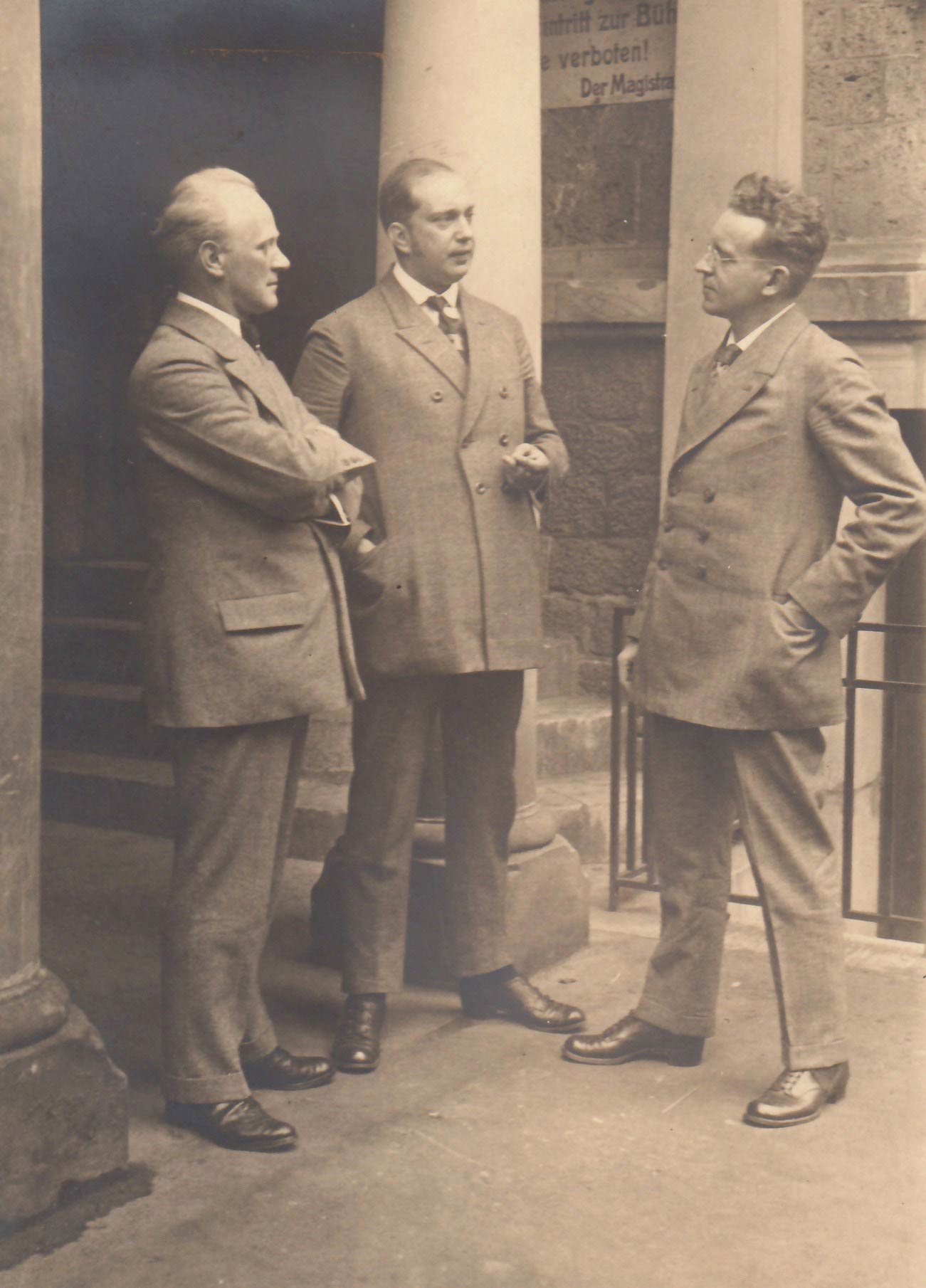
from left to right: Paul Thiersch, Hanns Niedecken-Gebhardt, Oskar Hagen
But this does not happen in the year 1925. There are artistic differences with Göttingen. Hagen’s intense intrusions into, and adaptations of, the operas are no longer welcome. The Handel festival is continued not until 1926. Admittedly in German but without further adaptation by Oskar Hagen, the opera Enzio is performed.
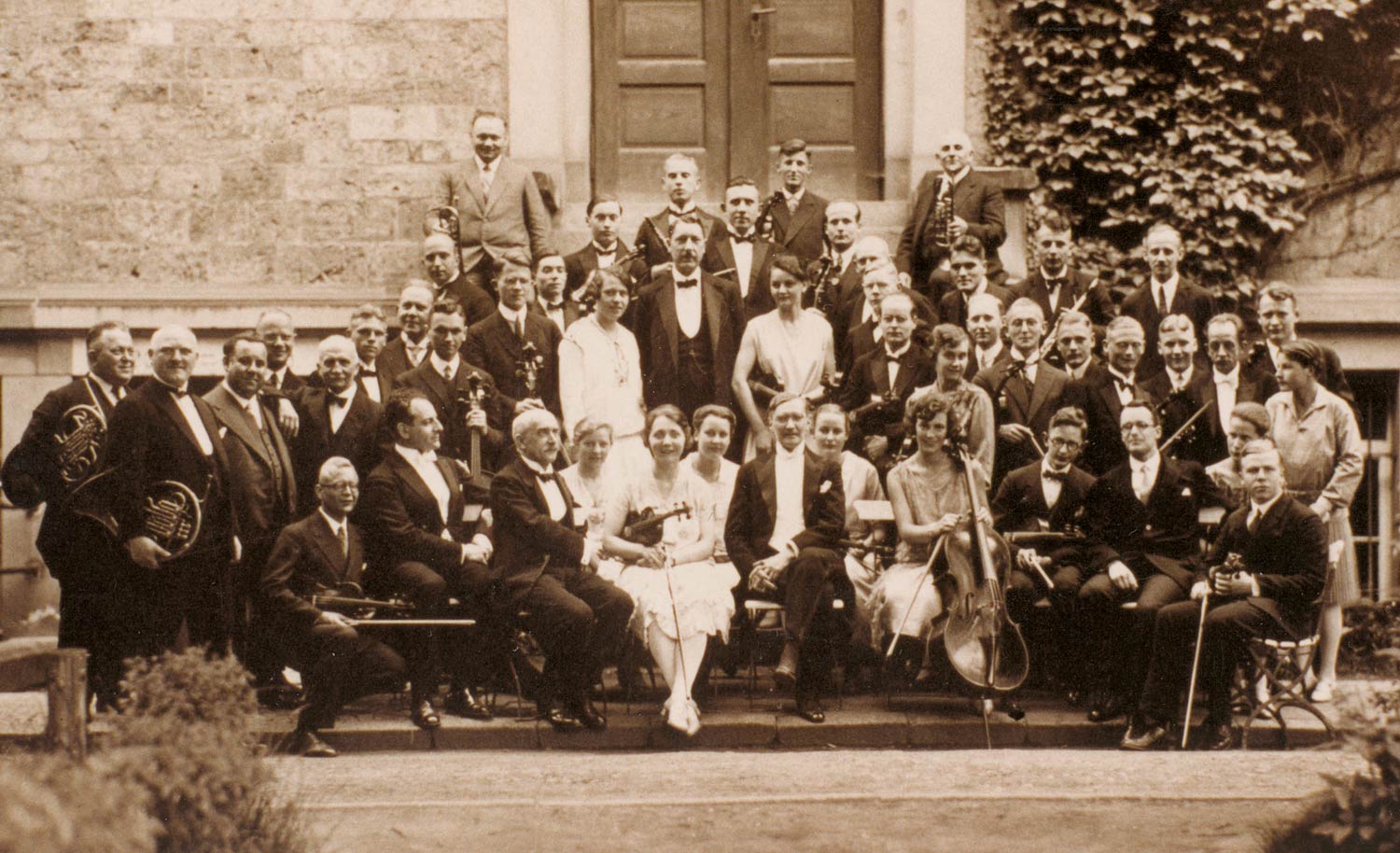
The Akademische Orchestervereinigung (AOV) in 1927
3.2 Subordination instead of »cooptation«
The Göttingen Händel-Gesellschaft in the National Socialist era
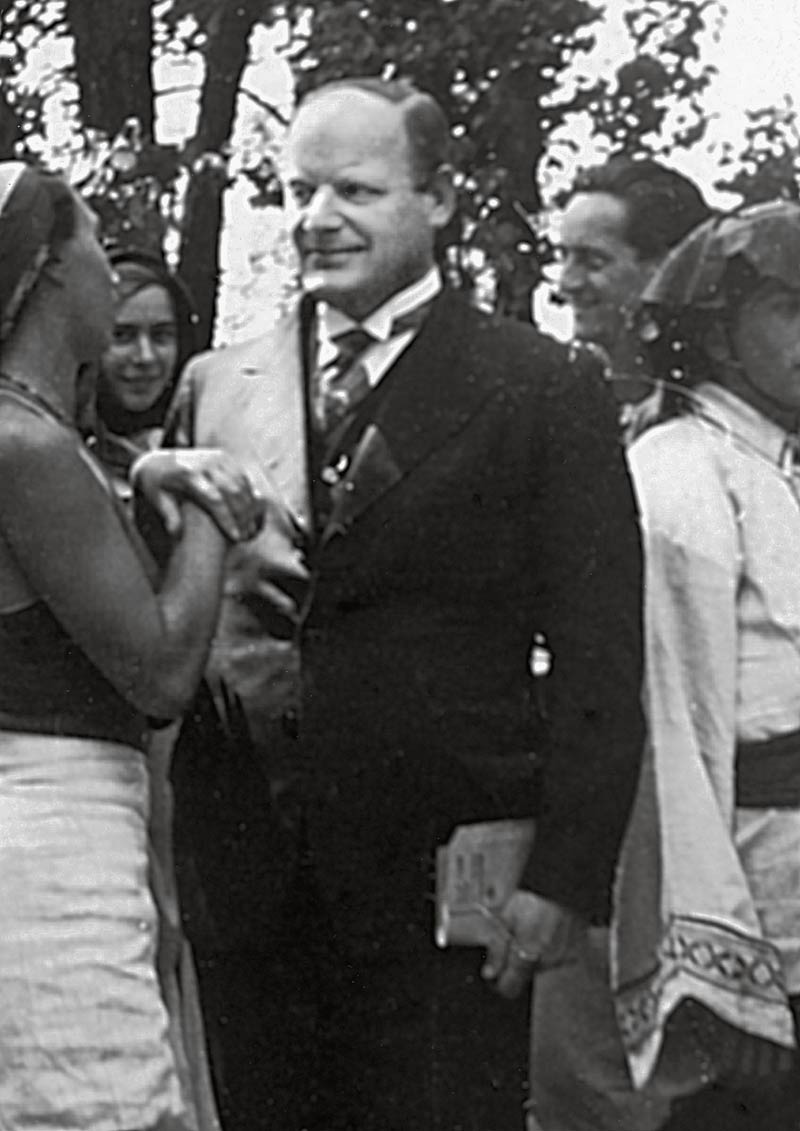
Walter Meyerhoff (1890 -1977)
In the year 1931, the Goettingen Händel-Gesellschaft is founded as a registered society. The moving spirit in this step is Walter Meyerhoff. He holds the office as the managing director from the very start and becomes the mastermind of the Händel-Gesellschaft e.V. After Adolf Hitler’s rise to power in January 1933, the Händel-Gesellschaft is also being threatened by the ideological »cooptation«, i.e. usurpation for the purpose of the National Socialists. In this situation, Meyerhoff chooses the way of preemptive obedience, the so-called »self-cooptation«. He wants to preserve a degree of independence thereby.
Gleichschaltung (cooptation)
Gleichschaltung (cooptation) was the euphemistic term used by the National Socialists for the process of political and cultural Nazification. With the use of whatever means deemed necessary, including brute force, all areas of politics, society and culture were to be organized in accordance with Nazi ideology. It meant, for example, that existing organizations were incorporated into Nazi associations. The overall aim was to abolish all forms of pluralism (diversity) in state and society by 1934. Every area of human life was to be subsumed under the Nazi dictatorship.
Selbstgleichschaltung (self-cooptation) was the term used to describe the voluntary subordination or submission to Nazi requirements, such as the exclusion of Jews from clubs and associations.
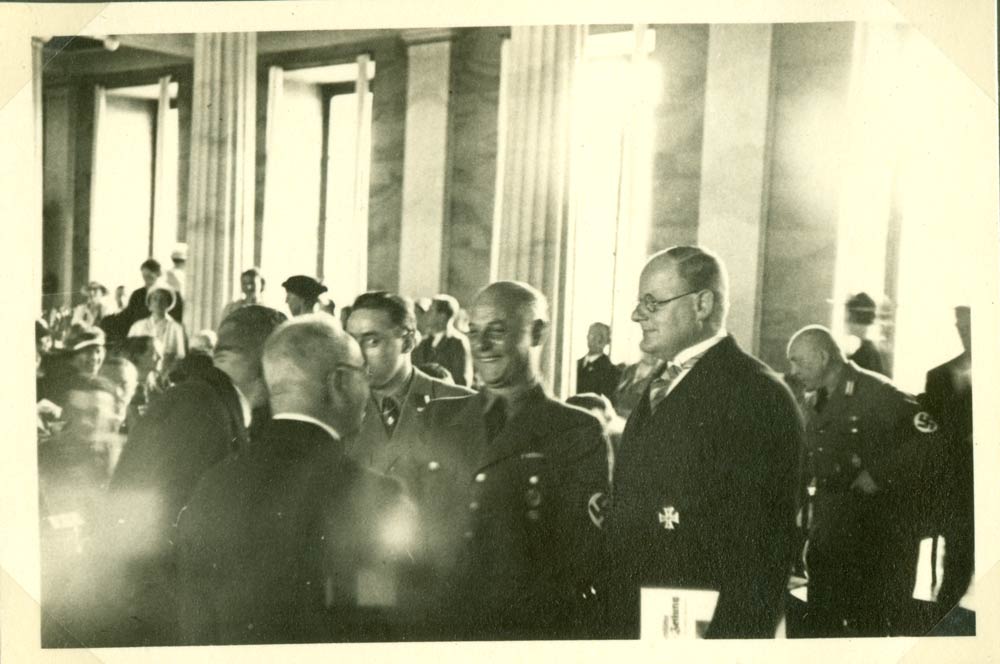
front row from right to left: Walter Meyerhoff, Präsidentialrat Heinz Ihlert, Geheimer Rat Valentiner on 23.06.1935
The main victim of that self-chosen accommodation is Wolfgang Stechow. Stechow has a Jewish mother and therefore fits the anti-Semitic enemy stereotype of the National Socialists. Meyerhoff squeezes him out of the board in a morally questionable way.
At the same time, he fills the board with convinced followers of the Nazi regime. Hans Plischke, professor of ethnology, becomes the chairman and Herrman Muhs, NS-district president, becomes honorary chairman. This stroke is cynical and morally reprehensible without doubt. But later it becomes apparent that more radical cooptation attempts from Berlin could be warded off in this way.
At the same time, the alliance with the Nazis provides Meyerhoff with room for the artistic reorientation of the festival having started since 1934.
Forced to leave the managing-board
Wolfgang Stechow (1896-1974)
Wolfgang Stechow – like Hagen – is an art historian and works in the art-historical seminar in Göttingen. Stechow is an active member of the Akademische Orchestervereinigung (AOV) already before the war. He plays several instruments. He is particularly esteemed for his piano playing. After the departure of Oskar Hagen in the year 1924 he assumes the direction of the orchestra of the AOV.
His personality, his work and his dedication to the AOV and the Händel-Gesellschaft are held in great esteem. But all this does not help or protect him. In the year 1936 he is pressed by Walter Meyerhoff to resign from his position on the board of the Händel-Gesellschaft. This position and also some others are now filled with NS-figures from Göttingen.
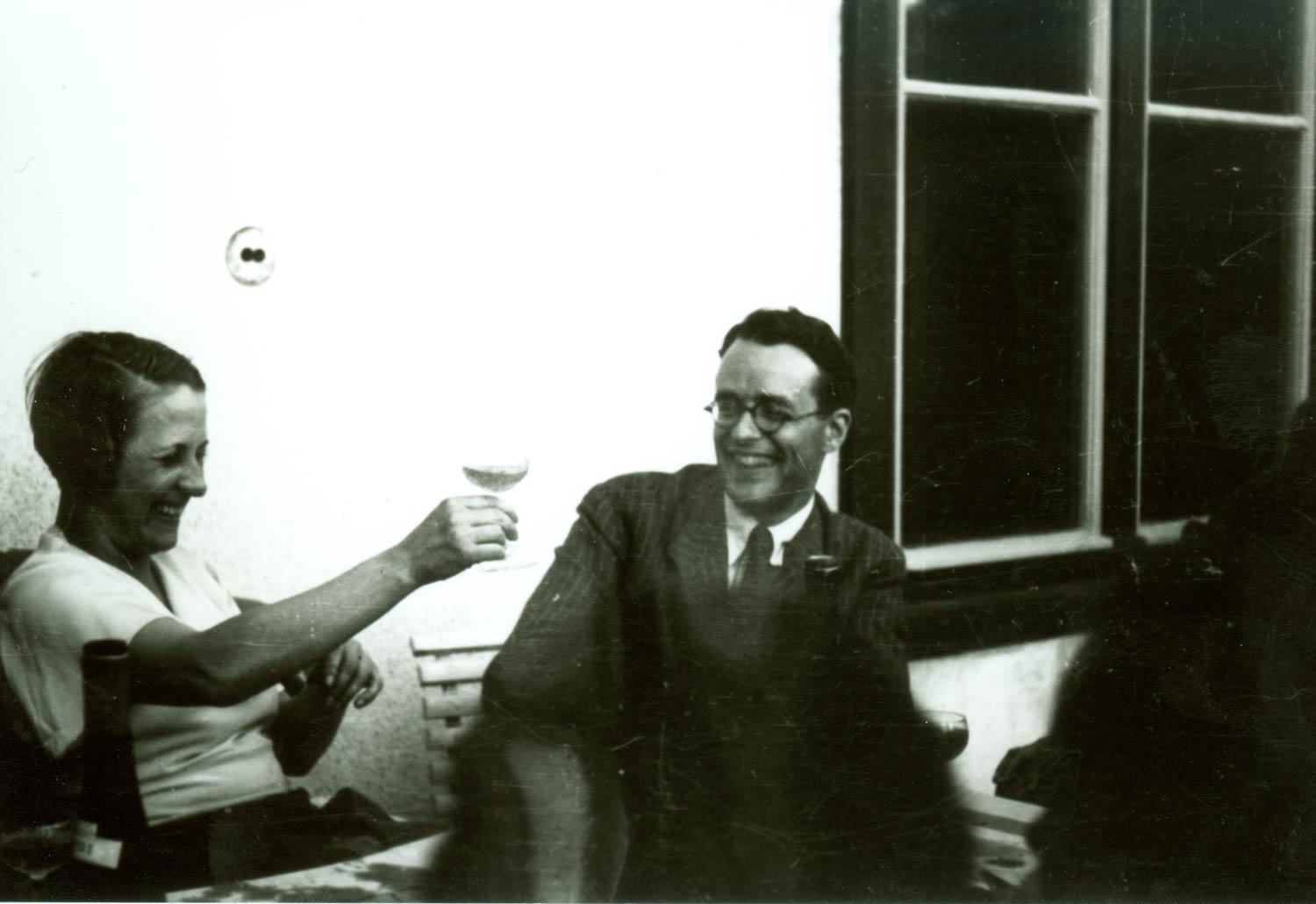
Stechow in good company around 1922; Source: Göttinger Händel-Gesellschaft e.V.
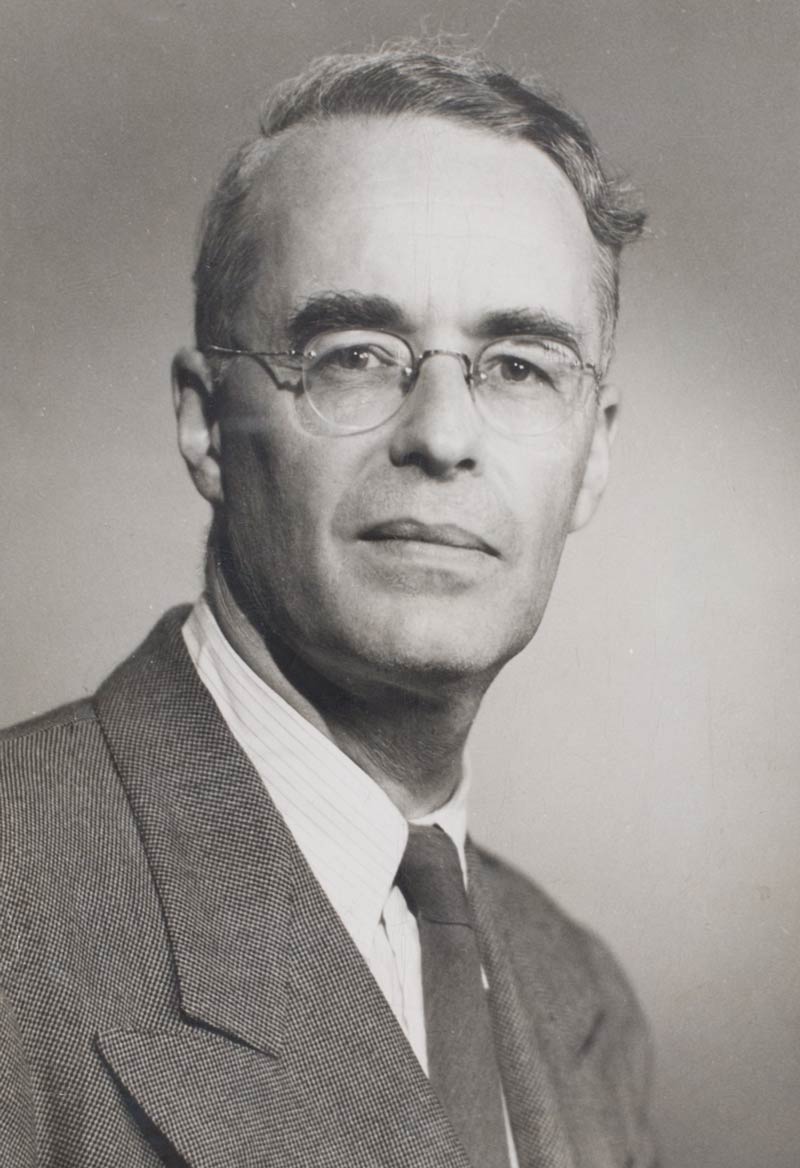
Wolfgang Stechow
As a protestant citizen with Jewish ancestors, Stechow becomes a victim of the anti-Semitic persecution of the Nazi regime. He immigrates to the United States with his family. Oskar Hagen can place him in assistantship at the University of Madison (Wisconsin).
After the war, Stechow maintains contact with Göttingen, visiting the city now and then since the 1960s. He becomes a member of the board of trustees of the Handel Festival. Stechow even gives a lecture at the Seminar for Art History, his old place of work. Seven years after his death, his widow Ursula Stechow bequeaths his valuable graphic collection to the Seminar of Art History and his estate is left to the city archive.
A career in the days of the
National Socialism
Hanns Niedecken-Gebhard (1889 –1954)
Hanns Niedecken-Gebhard is known as director of the Handel Festival. His name is closely linked to the Festivals from 1923 until 1954. He reads musicology together with Oskar Hagen in Halle. The latter brings him to Göttingen for the third Festival in 1922.
Niedecken-Gebhard is greatly influenced by the free dance currently developing. That dance is part of the theatre reform movement. He regards the dance as an element of the music. He raises the »dancing style« to a stylistic device of modern opera art.
He belongs to the few homosexual artists who are not only able to keep their position during the Nazi era but even to expand it.
From 1931 until 1933 he works at the New York Metropolitan Opera. But he re-leaves America. He regards the National Socialism as a chance to realize his artistic ideas. As for him, motion and dancing are an important form of expression in an opera. In order to be able to work in Nazi-Germany, he forms a bogus marriage with the set designer Lotte Brill.
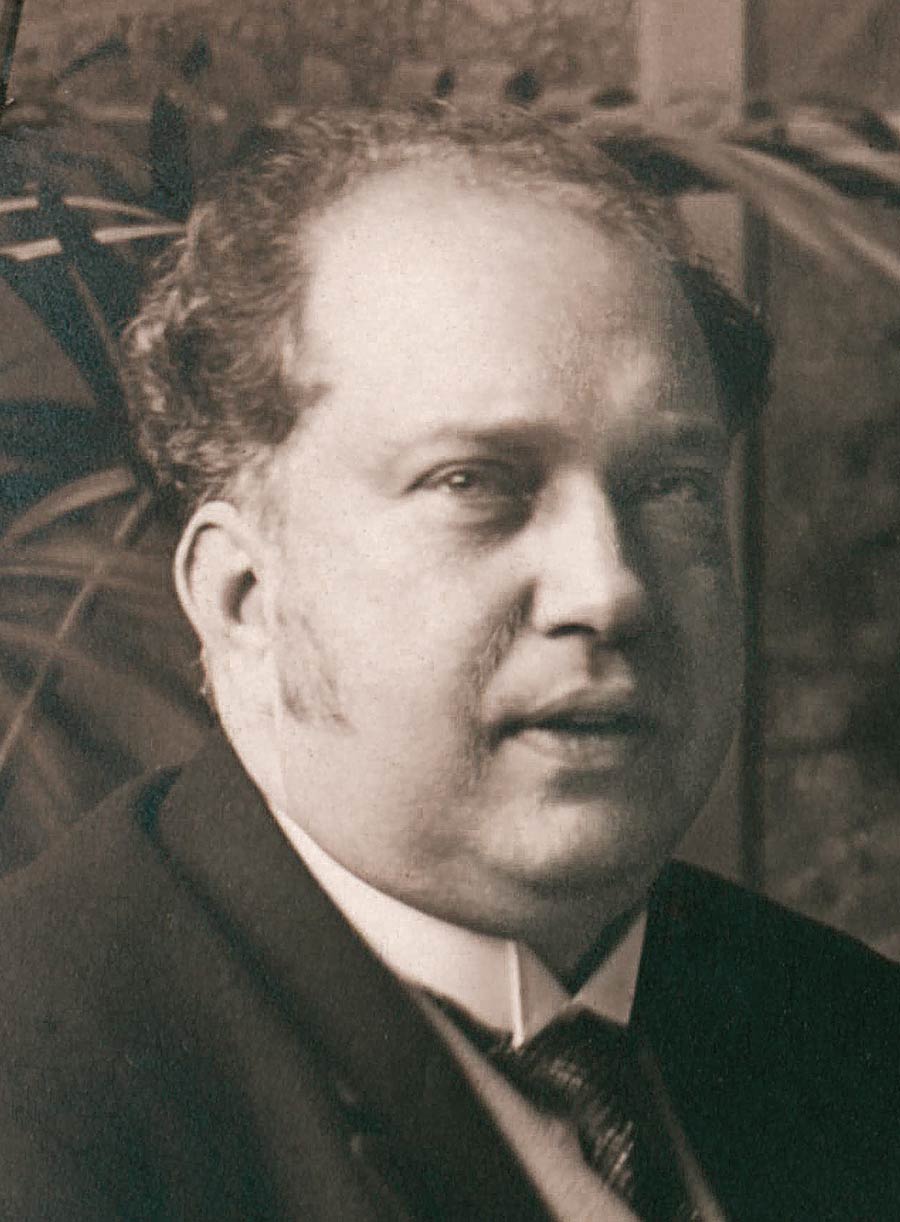
Hanns Niedecken-Gebhard 1928
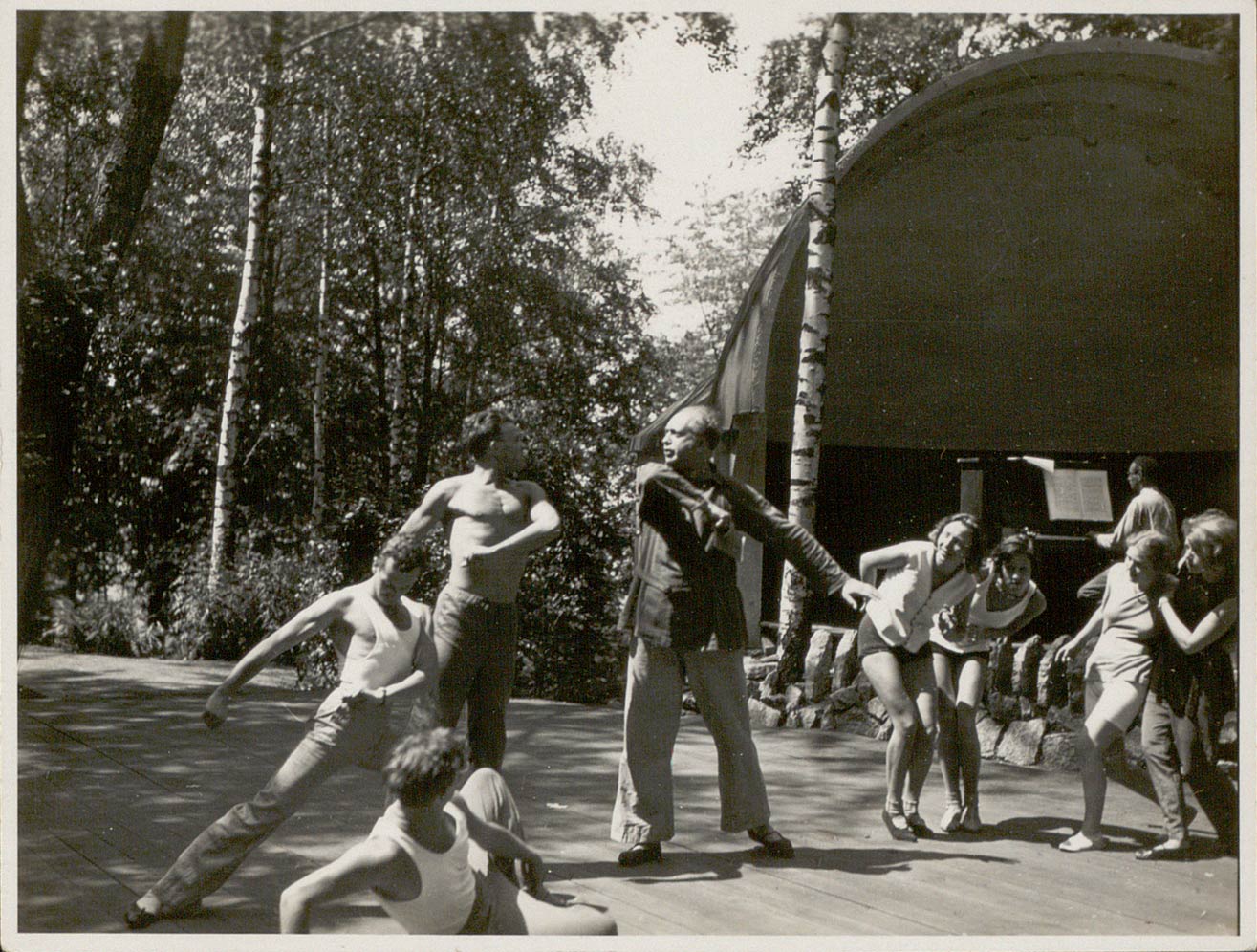
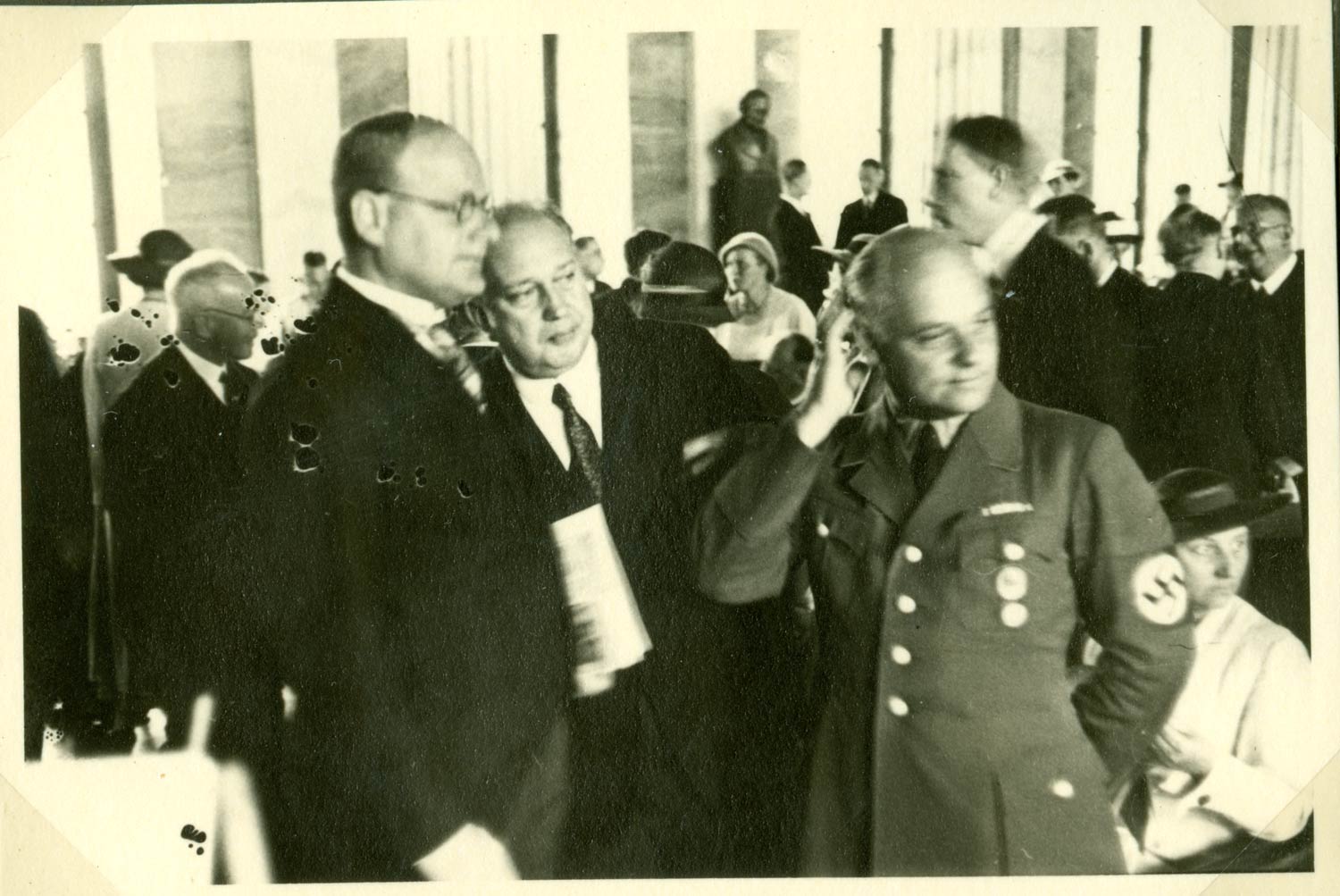
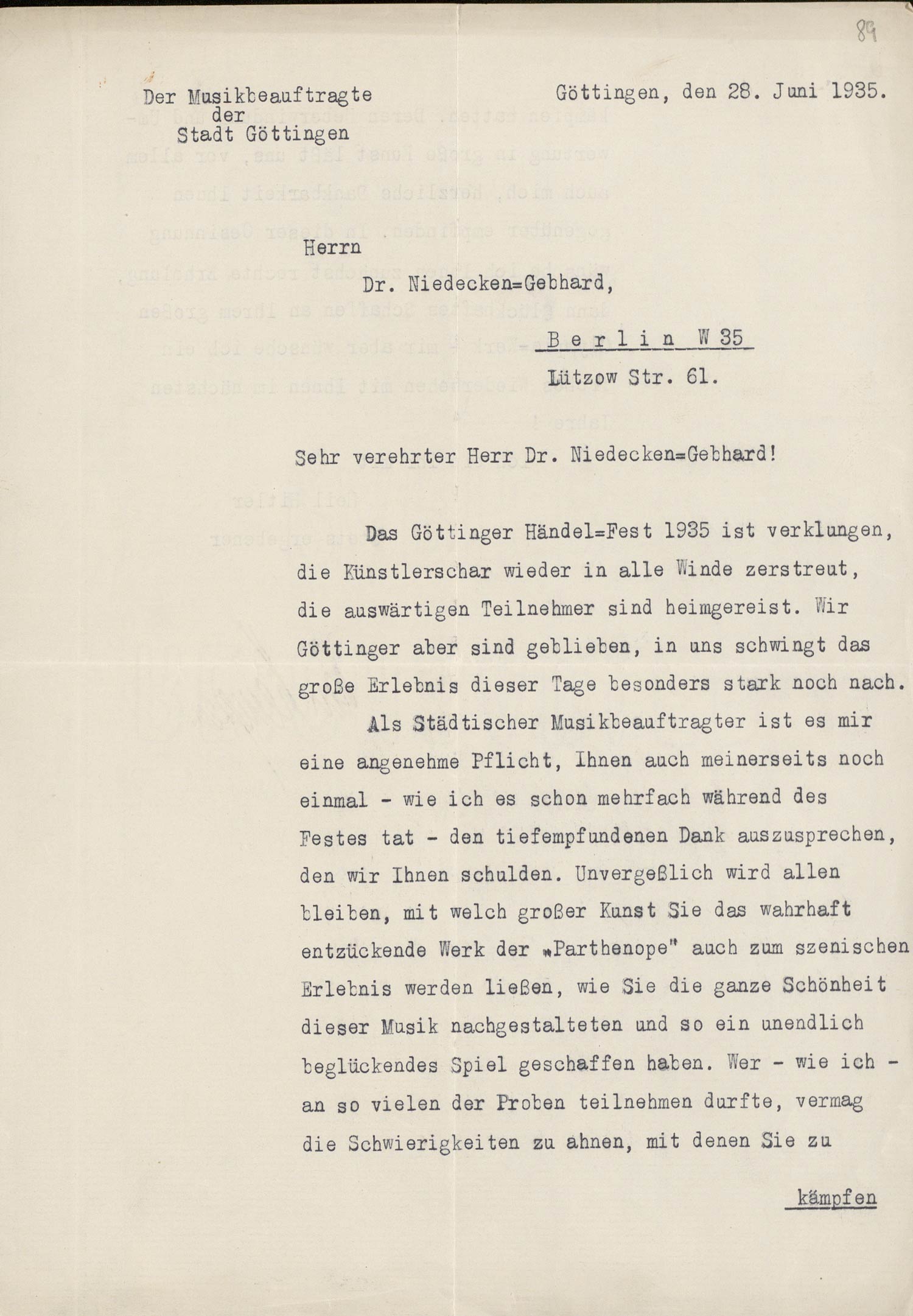

Walter Meyerhoff and Hanns Niedecken-Gebhard on 23.06.1935 with Präsidentialrat Heinz Ihlert, who in 1940 became the director of the Reich music board
Niedecken-Gebhard cultivates the »Thing plays« required by the Nazis as „völkisch theatre“. He stages the opening ceremony of the Olympic Summer Games 1936 as well as the 700 anniversary celebration of Berlin 1937. He is awarded the title of professor by the Reich Minister of Education. He lectures at two chairs, in Berlin and in Leipzig. In all these years, he continues directing in Göttingen at the Handel Festival.
In the year 1945, he is removed from his offices and his chair in the first place. However, as of 1947 he is allowed to teach theatre arts in Göttingen. Until his death in the year 1954, he had a formative influence on the Göttingen Handel Festival.
»I had to cross my best friend, Niedecken-Gebhard, off the list. At the time when we in America heard about the atrocities against the Jews, he continued to work calmly under the Hitler regime. The step was very painful for me. And he was deeply hurt, didn’t understand it at all – a nice decent gentleman, a strange example of German amnesia, he was, this phenomenon of plugging his ears with wax so as not to hear the screams of Auschwitz and Dachau, of putting everything away, down to the subconscious.«
-Vicky Baum, 1962
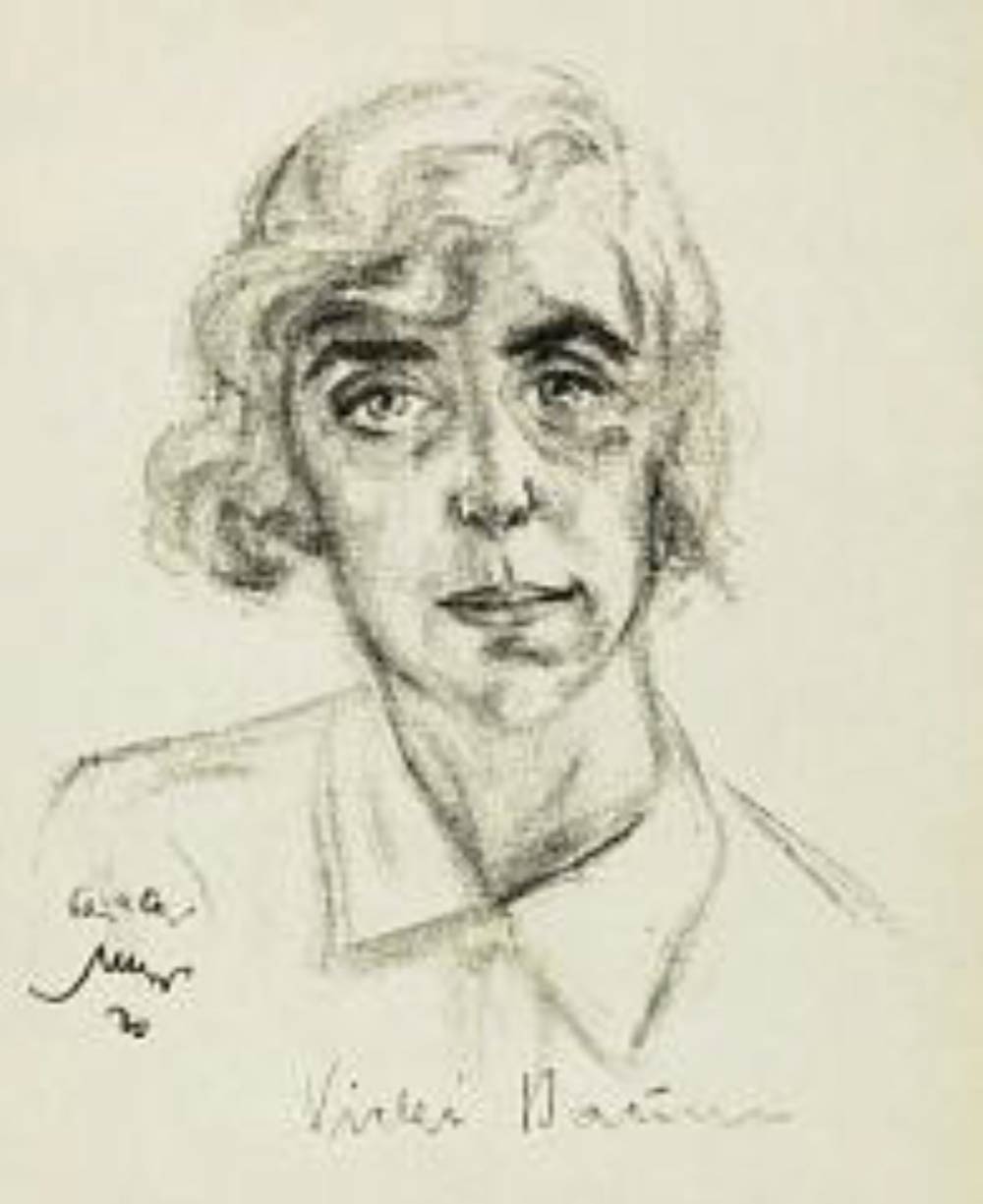
Vicky Baum
3.3 Concealment and suppression
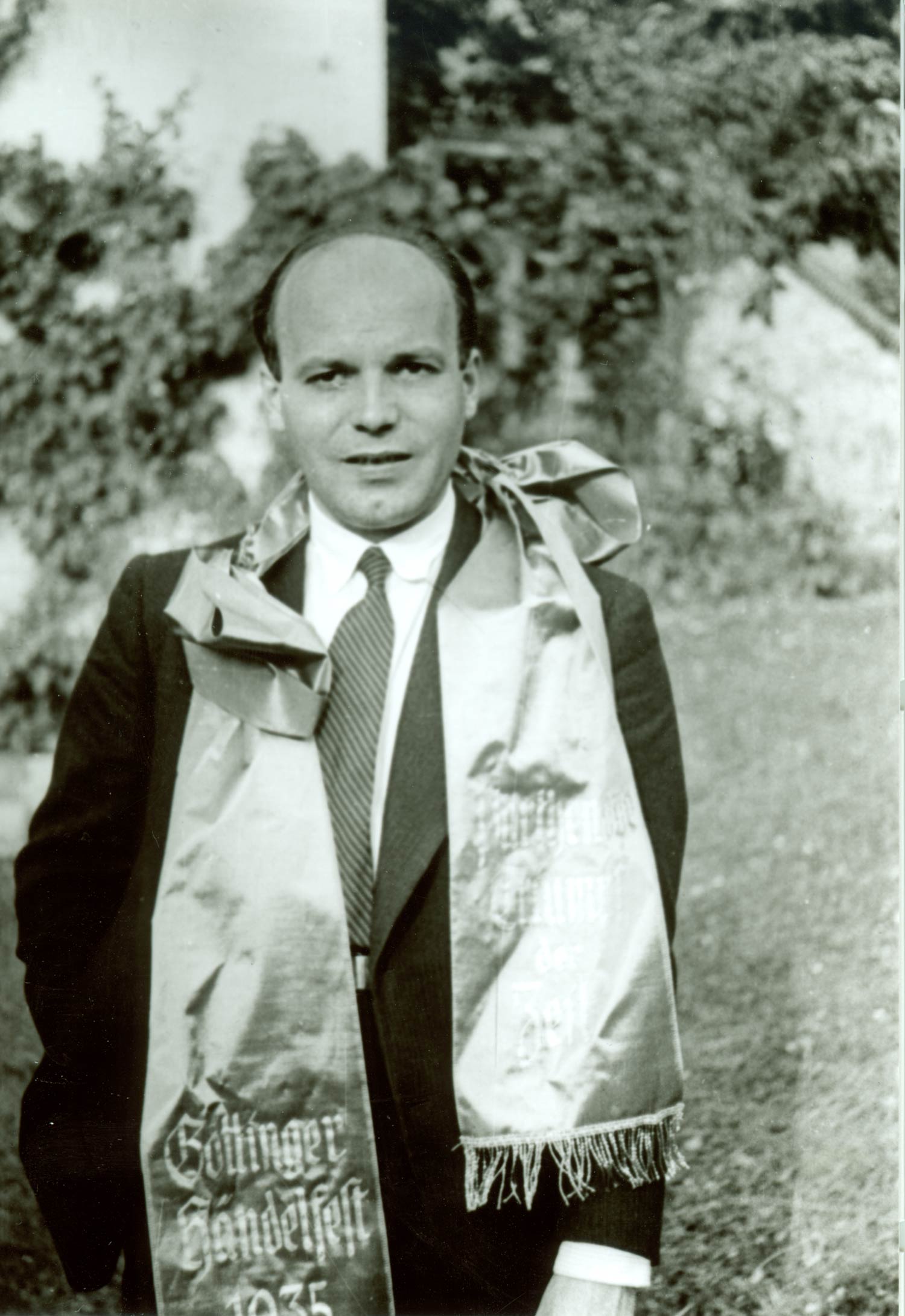
Fritz Lehmann
Fritz Lehmann is a musician and conductor. In the year 1923, he goes to Göttingen and continues with his studies of musicology at the University of Göttingen. During that time he becomes acquainted with Oskar Hagen. From 1923 until 1927, Lehmann becomes firstly choir master and subsequently musical director at the municipal theatre of Göttingen. In the year 1934, he becomes the artistic director of the Handel Festival.
In the year 1937, he enters the NSDAP thereby documenting his closeness to the regime. After a conflict with the district leader of the NSDAP Thomas Gengler in the year 1944, Lehmann calls off the participation of the Händel-Gesellschaft in the Handel week planned in that year by the NSDAP. But Fritz Lehmann remains the artistic director of the Handel Festival. He holds that position until the year 1953. Together with Niedecken- Gebhard he is one of the most-influential figures of the festival in the post-war period. Until the closing of the opera activities in the year 1950, he also is the general administrator of the municipal theatre of Göttingen.
It is typical of the post-war period and the young Federal Republic of Germany that the National Socialism is not made a subject of discussion. Any accounting for the past takes place almost not at all. Germany suppresses the Nazi era. Past injustice is not named but shall be forgotten. In particular, the involvement of individual persons such as Lehmann and Niedecken-Gebhard in the National Socialism is ignored.
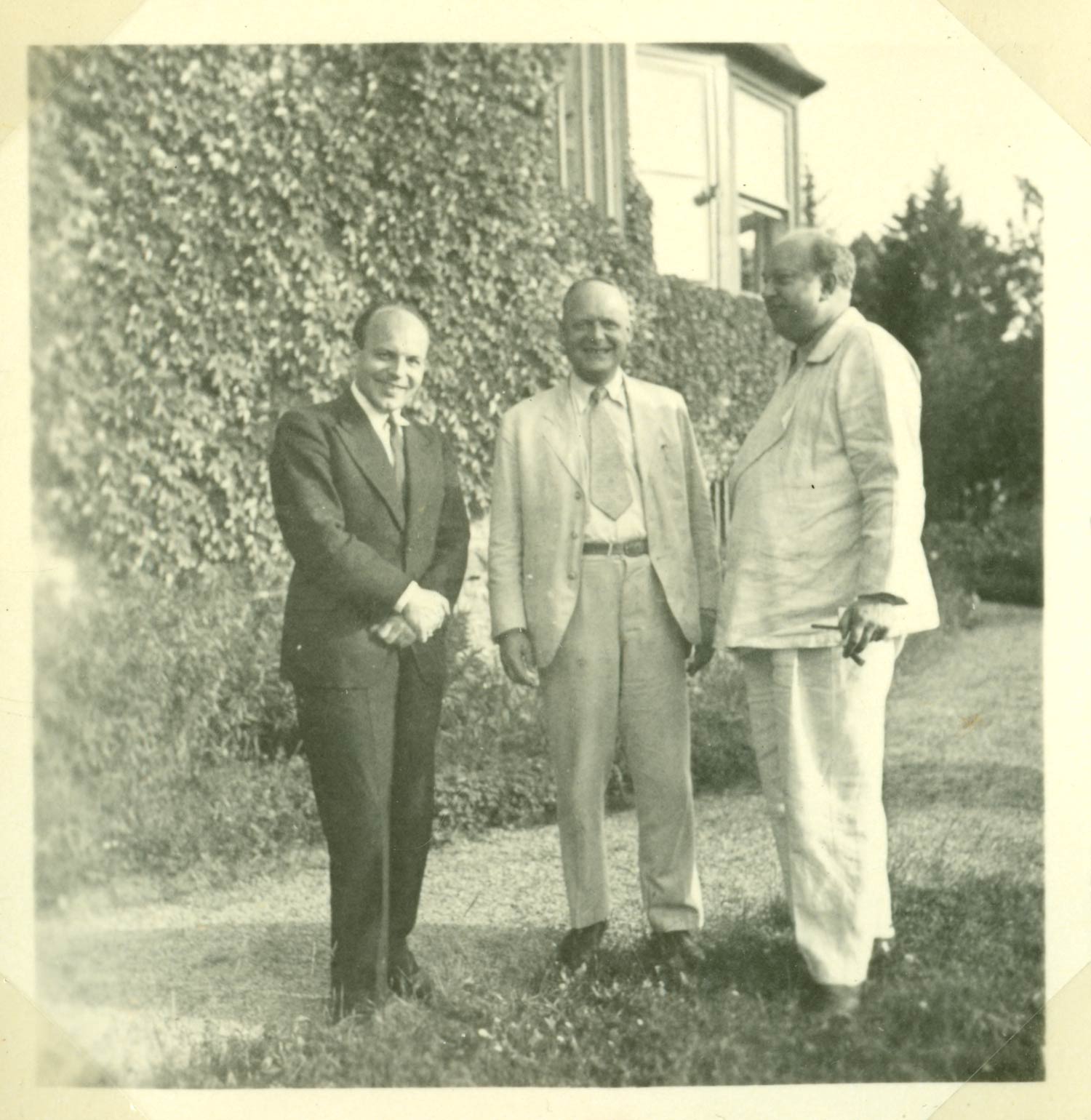
from left to right: Fritz Lehmann, Walter Meyerhoff, Hanns Niedecken-Gebhard
45 years of dedication to the Göttingen Händel-Gesellschaft
Walter Meyerhoff (1890-1977)
Walter Meyerhoff is a lawyer. In the year 1923, he comes to the regional court Göttingen as a judge. After the National Socialists’ rise to power in 1933, he is professionally marginalized due to his Jewish ancestors and political views. But he keeps his office as a judge. Meyerhoff also is an active catholic and supports the Göttingen St. Paulus church. This earns him further personal troubles.

Walter Meyerhoff (left) with Percy M. Young (1912-2004), a British Handel-researcher
The first Festivals are financed by the Universitätsbund. On 22 March 1931, Meyerhoff founds the Göttingen Händel-Gesellschaft e.V. The purpose of the society is the care of the works of Handel and the holding of the festival. The foundation of the association guarantees the sustainable development of the Festival.
In the year 1933, Meyerhoff squeezes the art historian Wolfgang Stechow out of the board of the Händel-Gesellschaft. He meets with hostility from the National Socialists because of his Jewish ancestors. At the instigation of Meyerhoff, convinced supporters of the NS-regime are now admitted to the four-person board. Due to that fact, presumably, Meyerhoff is able to prevent the extensive “cooptation”, i.e. usurpation, by the NS cultural policy later on.
From 1931 until 1976, Meyerhoff is the most-influential figure within the Göttingen Händel-Gesellschaft, initially as the managing director and later as the chairman. From 1945 until his retirement in 1958, he holds office as the president of the regional court Göttingen.
Until 2008, the Göttingen Händel-Gesellschaft e.V. had organized and financed the festival. Down to the present day, the association is the principal partner of the Internationale Händel-Festspiele Göttingen GmbH founded in the year 2008.
In the last chapter of the digital exhibition, we accompany the Göttingen International Handel Festival on its journey to becoming an internationally well-known Festival.
Akademische Orchestervereinigung Göttingen – Festspielorchester 1920 bis 2020
Chapter 4
The Göttingen International Handel Festival today
The Göttingen International Handel Festival’s development from a local project to one of the most well-known baroque music festivals in the world begins in earnest in the 1980s. Together, the artistic director and intendant develop new ideas and ambitious concepts. After World War II the cantor Ludwig Doormann lays a focus on Handel’s oratorios in his short period as Artistic Director. In his two decades of leadership Günther Weißenborn invites famous soloists like Dietrich Fischer-Dieskau, Julia Varadey, Hermann Prey or Marilyn Horne to Göttingen. Under John Eliot Gardiner in the early 1980s, the focus of the Festival shifts to historical, faithful-to-the-original performance practices. This focus is continued by Gardiner’s successor, Nicholas McGegan. The Festival has, and will continue to, become increasingly professional and international. The current duo of Laurence Cummings and Tobias Wolff develops new formats for performances and events in a variety of different settings in the region around Göttingen. Internationally acclaimed singers perform every year, and the development of young talent has become an important part of the program. The Göttingen International Handel Festival has become an integral part of the international festival season.
Aside from Göttingen, there are two other Handel festivals in Germany today.
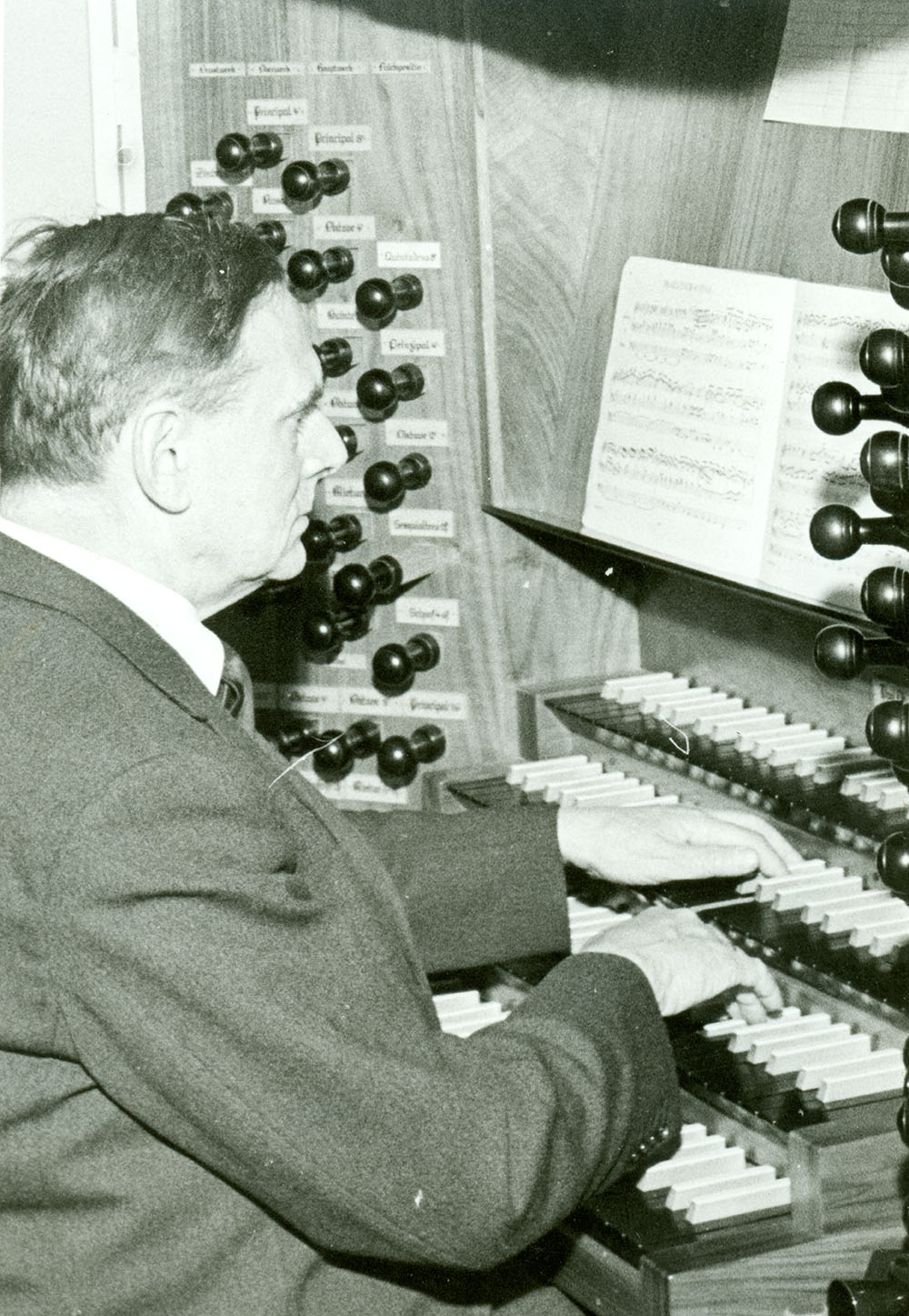

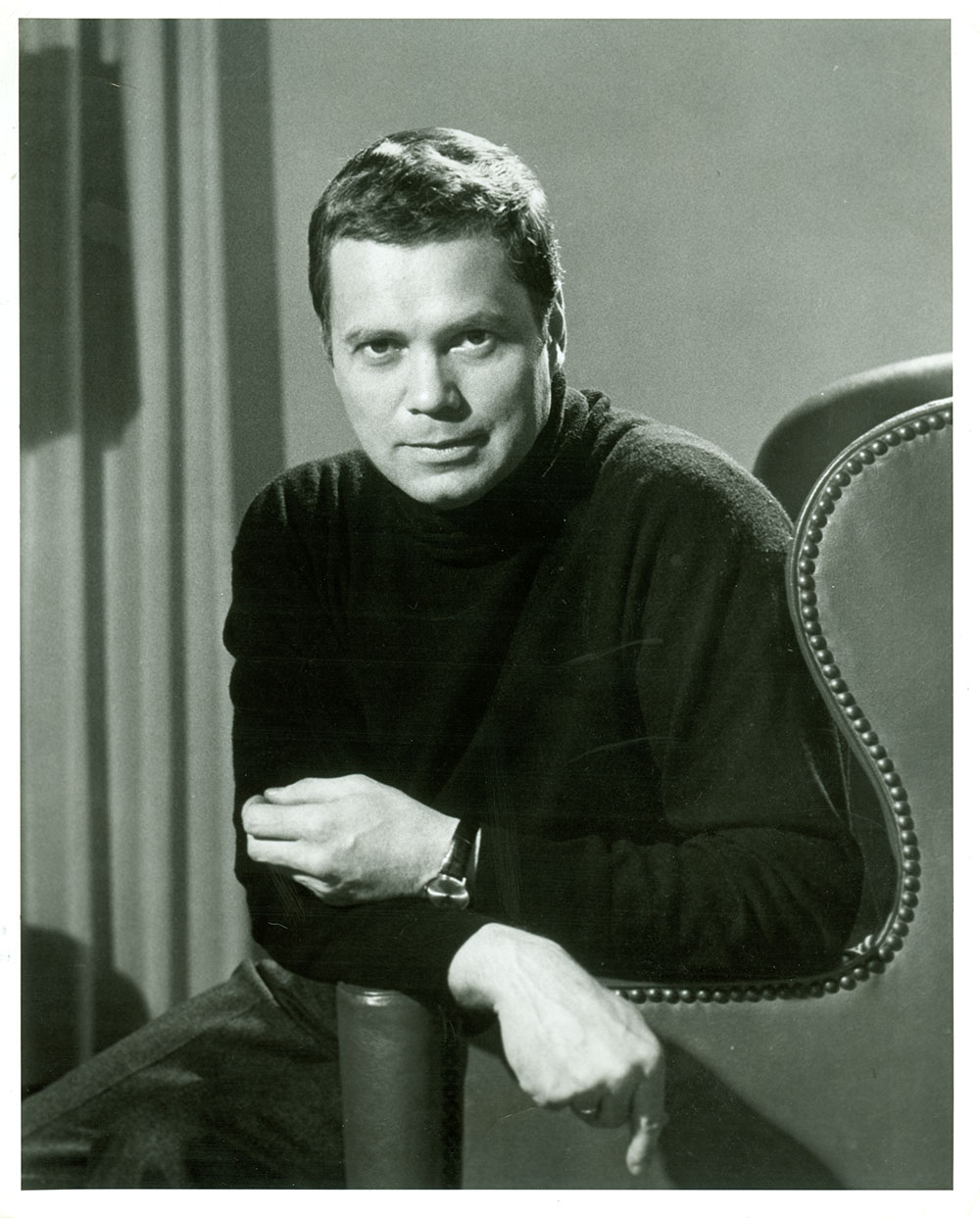


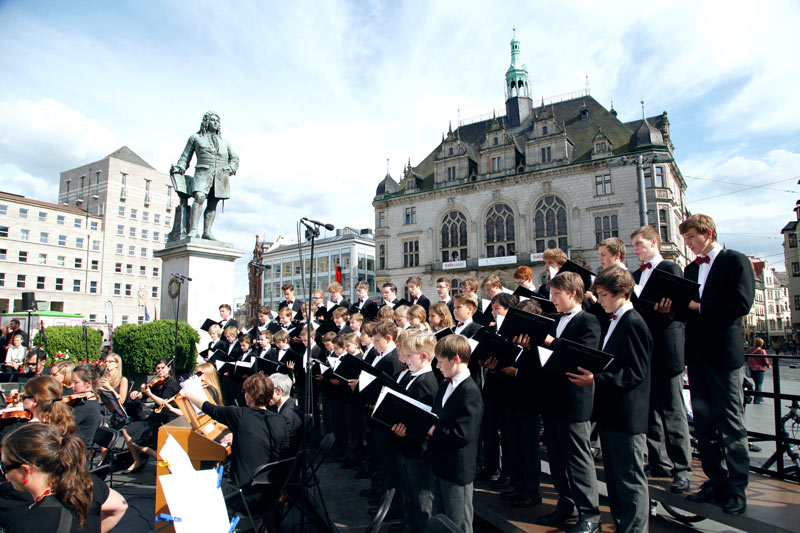
4.1 Friendly interaction
Amicable relations exist between the three German Handel societies. The respective other festival is visited on a regular basis.
The Handel-society in Halle
1922 a first Handel festival takes place in Halle, the town of Handel’s birth, too. Hans Joachim Moser puts a performance of the opera – under the title Orlandos Liebenwahn – on stage in Halle that is as historically authentic as possible. Moser (1889-1967) is a musicologist, composer, singer and author. He uses elaborate stage settings and baroque costumes.
In the year 1925, the Händel-Gesellschaft is founded in Halle. In the year 1929, the second festival follows and the third in 1935 in honor of Handel’s 250th birth anniversary. Since 1952, the Handel Festival has taken place in the month of June each year.
Opening ceremony of the Handel-Festival 2019 at the market place in Halle, Photo credits: Thomas Ziegler
In the year 1955, the Georg-Friedrich-Händel-Gesellschaft Halle is founded in the German Democratic Republic. The society defines their task as the »obligation to explore and bring to life as regards its sound« Handel’s music. The main task is the publication of the scientific-critical edition of the complete works of Handel. This edition offers musical texts for performances all over the world and is the most important basis for the Handel research.
From the very beginning there is an exchange with the Göttingen Händel-Gesellschaft. There are visits to Halle – quite officially and on a regular basis.
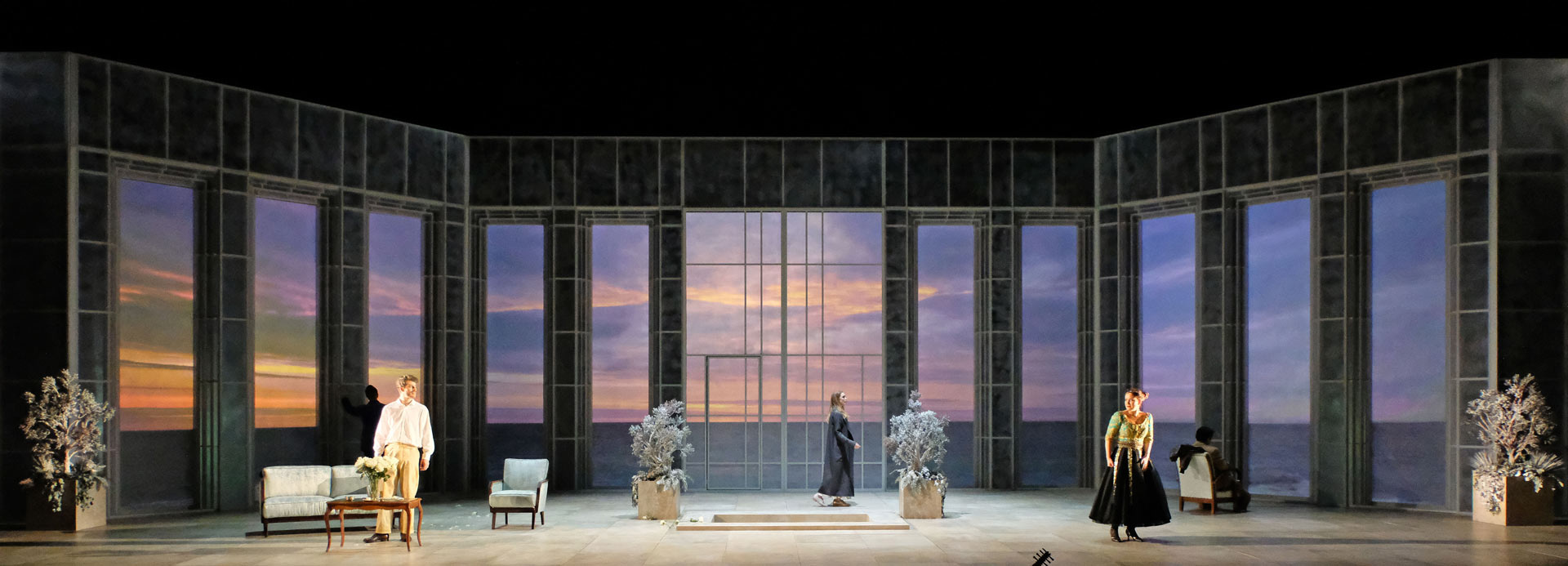
Handel-Festival in Karlsruhe 2019: Morgan Pearse (Araspe), Jakub Józef Orliński (Tolomeo), Louise Kemény (Seleuce), Meili Li (Alessandro), Eléonore Pancrazi (Elisa) Photo: Falk von Traubenberg
The Händel-Gesellschaft in Karlsruhe
Since 1978, the Badische Staatstheater [State Theatre Baden] has devoted themselves to Handel’s opera works. In celebration of Handel’s 300th birth anniversary, the Händel-Tage carried out each year were raised to the rank of a festival. The Händel-Gesellschaft Karlsruhe e.V. was founded on 9 October 1989.
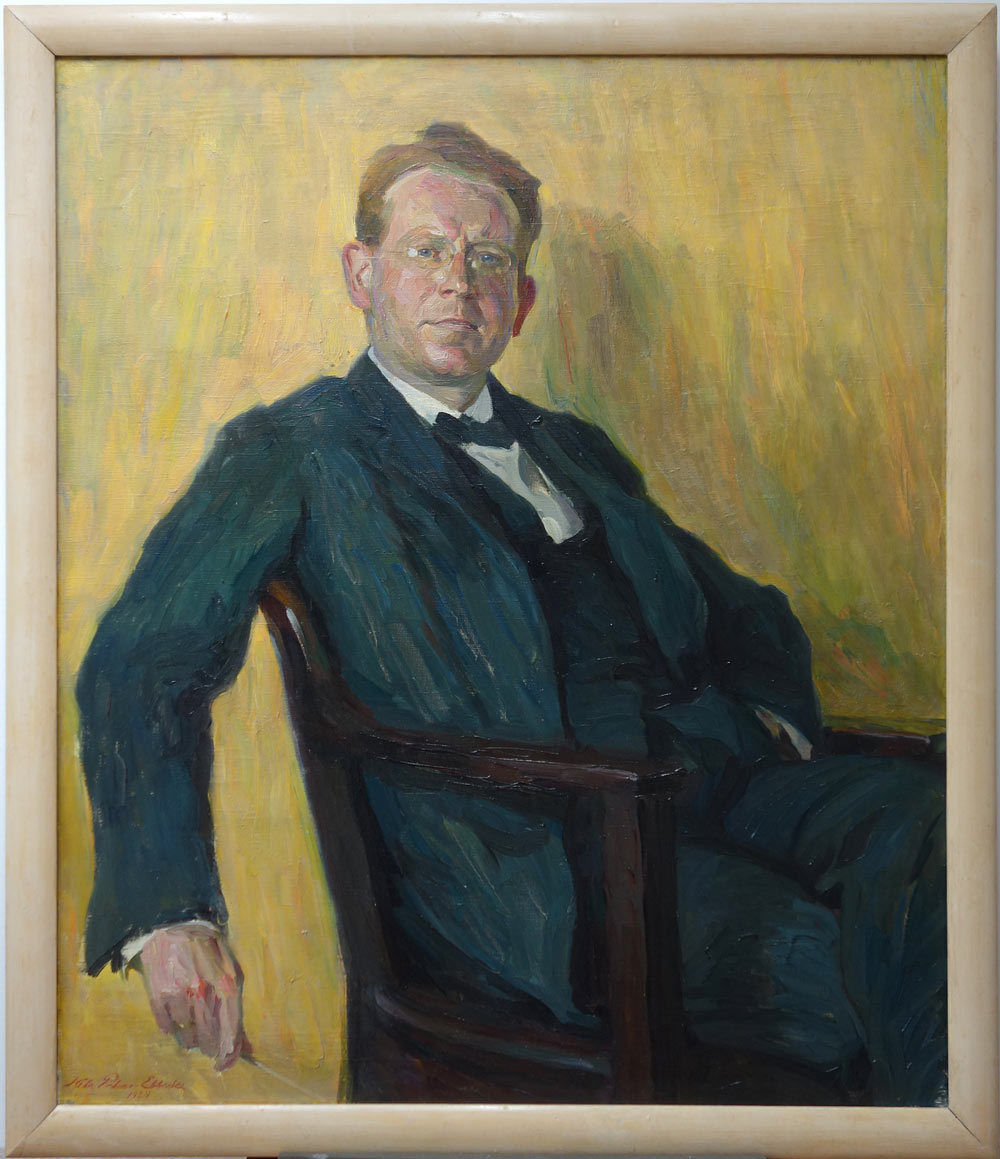
4.2 What does “faithfulness to the original” mean here?
Historical performance practice
In his adaptation of Rodelinde, Oskar Hagen makes numerous abridgements, rearrangements and transpositions (= alterations of pitch level). Under today’s standards, this intense intervention appears disconcerting.
This painting by Hela Peters-Ebbecke, 1924, oil on canvas, shows Oskar Hagen as a conductor. In his right hand, which is hanging casually over the back of the chair, he holds a conductor’s baton.
The painting is a present from the Universitätsbund to the university and currently in possession of the Art Historian Seminar and the Arts Collection of the University of Göttingen.
The idea of a reproduction of the operas of Georg Friedrich Handel that is oriented towards the sound of the time of creation is of no relevance in the year 1920. The main concern of Oskar Hagen and his fellow soldiers is to use Handel’s works for aesthetic innovation. Until the 19th century, the European concert life is characterized by the works of living composers. The performance of Johann Sebastian Bach’s Passion of Mathew by Felix Mendelssohn Bartholdy in the year 1829 was one of the first attempts to put the music of previous composer generations publicly on stage. Today, it goes without saying that the consideration of the performance practice of the time of creation forms part of the historical performance practice. The particularities of the respective historical instruments are taken into account. First steps towards a historical performance practice in today’s understanding were taken in the year 1935 in Göttingen with the opera Parthenope. The opera was put on stage unabridged and at full length.
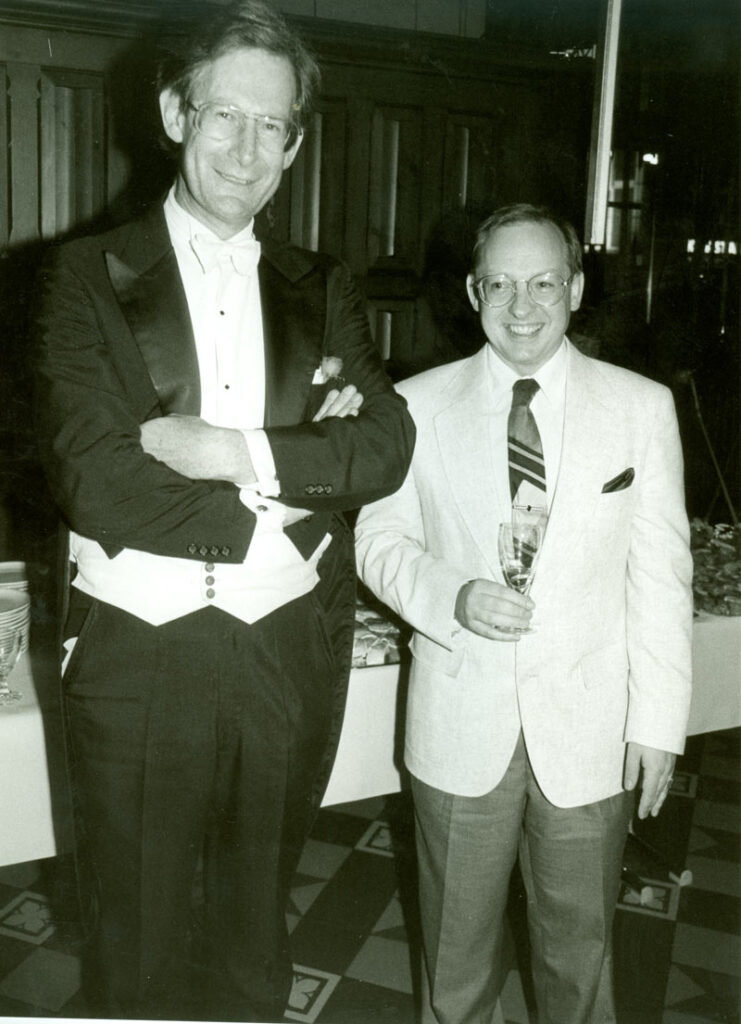
John Eliot Gardiner (left) with his successor Nicholas McGegan
In the year 1981, John Eliot Gardiner became the artistic director of the festival. With him, historical instruments and the contemporary understanding of historical performance practice also found their way into Göttingen.
That time is characterized by the countertenor Drew Minter and choreographs specialized in baroque dancing. Those are: Catherine Turocy and her New York Baroque Dance Company, Sigrid T’Hooft and the Ensemble Corpo Barocco or Margit Legler. Their direction style substantially goes back to the staging rules of the baroque.
“I am aware that my taking over the artistic direction of the IHFG may have been a shock to the system and a challenge to long-cherished traditions and expectations. I make no apology for that: There are many, many legitimate paths to Handel’s work.” John Eliot Gardiner at his farewell, 1990-
4.3 Handel: German? English man? European!
George Frideric Handel is born in Halle. He lives there for eighteen years. Then he goes to Hamburg for three years. Subsequently, he travels around Italy for four years. After his return, he stays in Hannover for some months. Then, as of the year 1712, he lives in England for 49 years. In the year 1927, he acquires the English citizenship. On April 14th 1759 he is buried at Westminster Abbey in London.
When Handel is born in the year 1658, there is – different from today – no national state of Germany. There is the Holy Roman Empire of the German Nation. This is a rather looser association between the emperor and the imperial cities. There are several hundreds of territories which act independently. The Holy Roman Empire of the German Nation is no hereditary monarchy. The emperor is selected. The emperor never manages to actually unify the regional territories. There are borders between the territories; they have different currencies and languages.
Handel rather would possibly have referred to himself as a citizen of the town of Halle than as a German. In Italy he is “the famous Saxon”. The elder Handel has chosen the English citizenship. Hence, he is eventually an English man – with a very European professional life.

George Frideric Handel
Historian
State and University Library of Lower Saxony
University of Göttingen
A major festival of international standing
The Göttingen International Handel Festival today
On its 100th anniversary, of all years, the festival had to be cancelled. The global Covid-19 pandemic has severely restricted public life, and major events were not possible in May 2020. The Festival found a creative solution though – and organized a digital version during the program period.
But this is not the first challenge the Festival has faced in its 100 year history. On its way to becoming a major, international festival spanning over several weeks, those involved have had to overcome numerous hurdles.
Over the past few decades, a number of new and creative formats have been developed to appeal to a broader public. Each year, thousands of visitors from across the world come to Göttingen for the Festival. The development of young talent and networking across Europe are also an important part of the Festival program.
Artistic Director
Göttingen International Handel Festival
The film for the exhibition
A Century of the Göttingen International Handel Festival
not only throws light on the Festival’s fascinating history, but also offers a look behind the scenes of a major international production.
For a glimpse of the 2019 production of the opera Rodrigo in the Deutsches Theater Göttingen, click here.
For the exhibition Händel_ Göttingen_1920 the Städtische Museum Göttingen and the Göttingen International Handel Festival produced a film. The videos of this digital exhibition show parts of the film. The whole film can be seen in the exhibition.
100 years of Göttingen International Handel Festival 2020: The digital jubilee
Due to the Covid-19 pandemic, there was little option but to postpone the Festival’s centennial celebrations by an entire year. In its place, a digital program was quickly organized.
Artists of this year’s Festival have recorded short musical contributions at home or opened their archives. Tobias Wolff has arranged digital appointments with some interesting discussion partners for several talks. An artistic contribution took place every morning and there were entertaining discussions in the evening, supplemented by a few specials such as the Festive lecture by Prof. Dr. Wolfgang Sandberger.
You can find the latest videos here on the front page, on »Facebook and on our »YouTube-channel.
In the “Digital Festival” section you find all the videos published so far, as well as a schedule with all the contributions.
The special exhibition Händel_Göttingen_1920 will be in the Städtisches Museum Göttingen until the end of May 2021. The film A Century of the Göttingen International Handel Festival is part of the exhibition.
For further information go to: https://museum.goettingen.de/
Find further informationen about the Göttingen International Handel Festival here: https://www.haendel-festspiele.de/
This multimedia exhibition was designed and produced by www.wetellmedia.de
